The village of Shirakawa-go is a must visit in your Takayama itinerary! This cultural village is one of three and is the most accessible. It is not only beautiful but really interesting to learn about. This is our top 10 things to do in Shirakawa-go, the prettiest place in Japan!
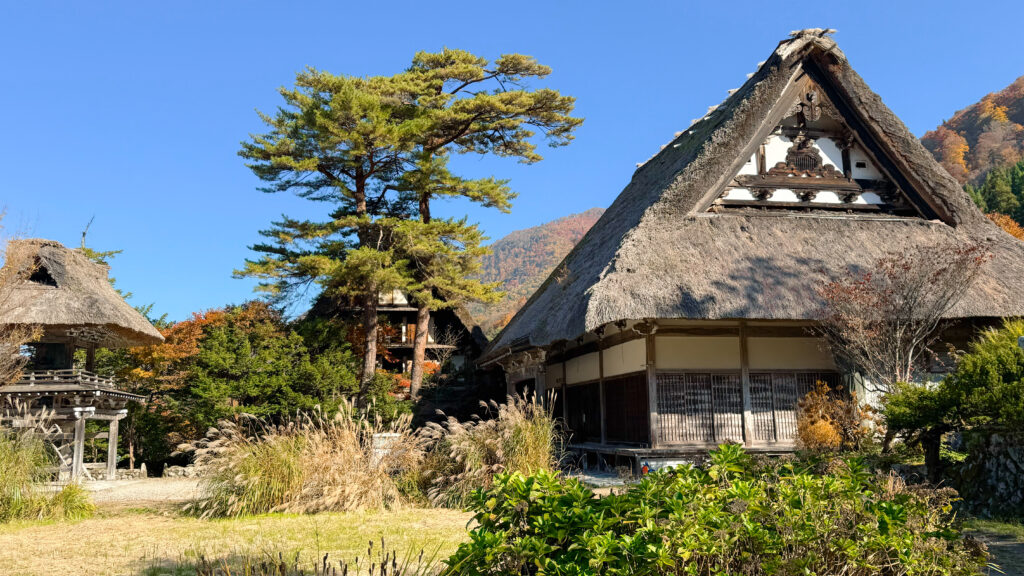
All our blog posts contain affiliate links that help us keep our blog running at no extra cost to you! When you click on our links to book accommodation, activities or transport we earn a very small commission. Clicking on our links to book your accommodation or activities costs no extra to you but helps to keep our blog online!
How to get to Shirakawa-go from Takayama?
Located around one hour from Takayama (check out our Takayama blog here to plan your trip!), buy a return bus ticket at the Takayama bus station for 5200JPY. From there it is free to enter the village itself, paying only if you want to enter the museums or houses. As we had already visited Hida Folk Village and been inside some of these styles of houses, we just wandered the streets taking in the stunning views. Read all about our time in Takayama including our visit to the Hida Folk Village, it has lots of information to plan your trip!
You can book this tour which will include a guide, this helps to deepen your understanding of what you are seeing and is very convenient! There is also a tour from Kanazawa to Shirakawa-go and is very popular!
You can also drive to Shirakawa-Go and park there, you will cross the suspension bridge into the main part of the village. If you are looking to rent a car in Japan we use Rental Cars. Parking will cost approximately JPN1000 for a day.
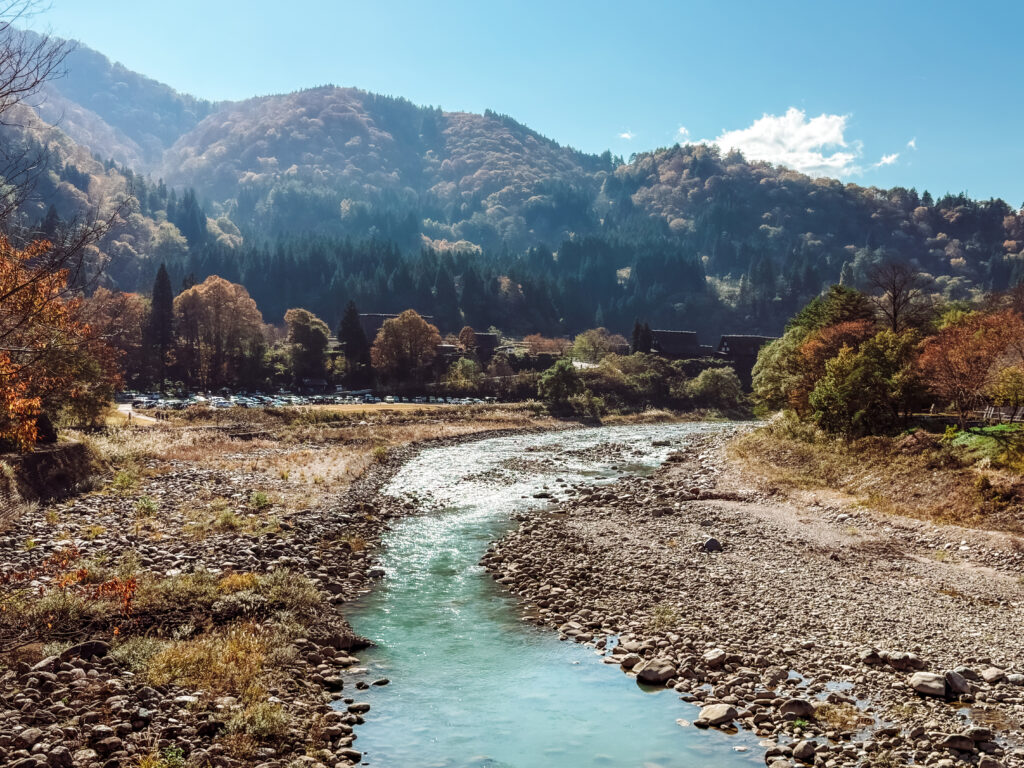
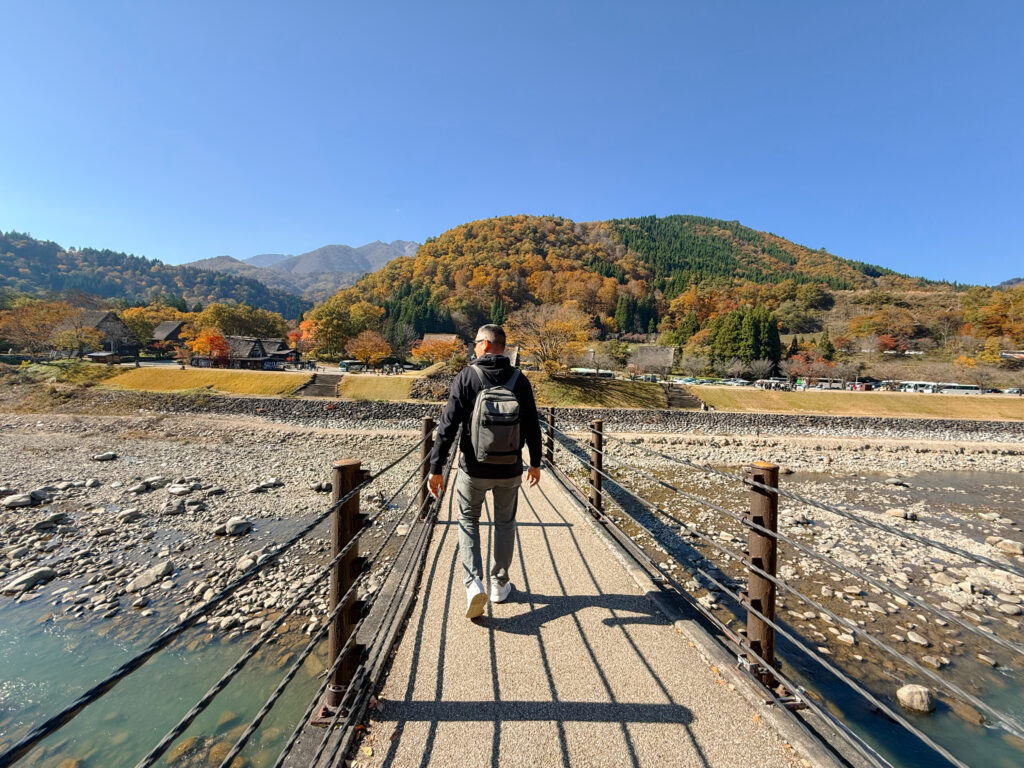
What is the best time to visit Shirakawa-go?
You can visit Shirakawa-go year round! It is beautiful in all the seasons with each offering its own unique atmosphere. We visited in November and it was stunning. Think blue skies, crisp temperatures and vibrant autumnal colours in the trees. It really was gorgeous!
In winter the snow will be falling and the images of the village tucked in to a blanket of snow are stunning, we would love to stay here during this time and enjoy the evening lights glowing on the snow.
Summer will bring the lush green trees out and the whole landscape will be a vibrant shades of green.
Spring of course will be stunning as the cherry blossoms begin to flower and the rice paddies are full.
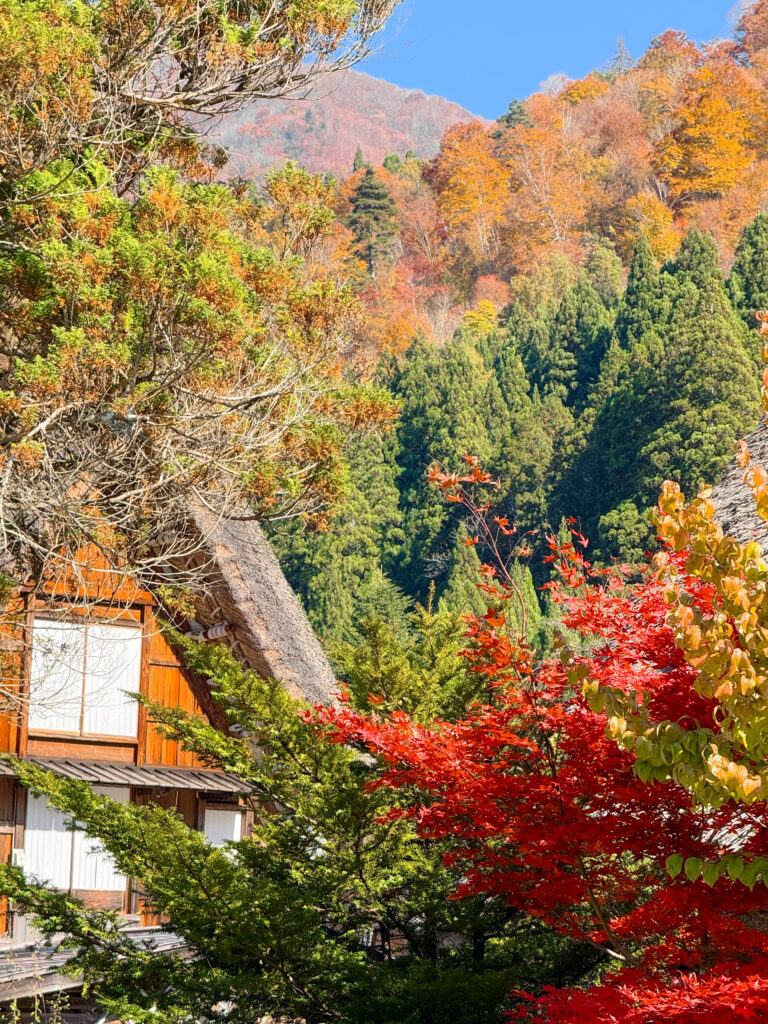

Is it worth staying overnight at Shirakawa-Go
Yes! There are some gorgeous places to stay in the village. Getting to enjoy the village before and after the other tourists have gone would be wonderful. These are our picks of where to stay:
天然温泉白川郷の湯 – this stay includes breakfast and dinner which is very convenient!
Onyado Yuinosho, Shirakawago – traditional Japanese rooms with tatami floors and mountain views, beautiful and well reviewed!
GuestHouse Shirakawa-Go INN – a more affordable option, clean and great staff.
Shiroyamakan – beautiful, breakfast and dinner included and very highly rated. This is usually booked out so make sure to book early.
Check out our You Tube Video on our time at Shirakawa-go to see what it is like in Autumn, subscribe to our channel to help support us!
What is the gassho-style houses?
The gassho-style houses are built with a very thick, approximately .5-1m thick, thatched roof. It is said that the shape of the roof represents praying hands. However it was built this thick to withstand the heavy snows of the region, sometimes more than 2m thick.
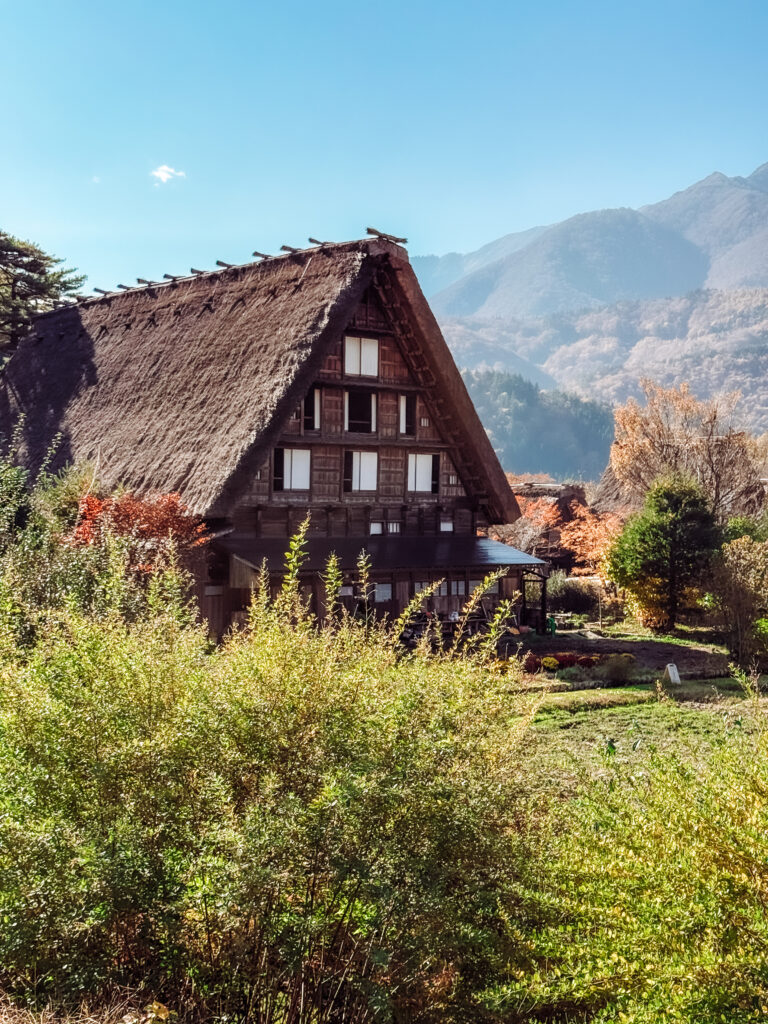
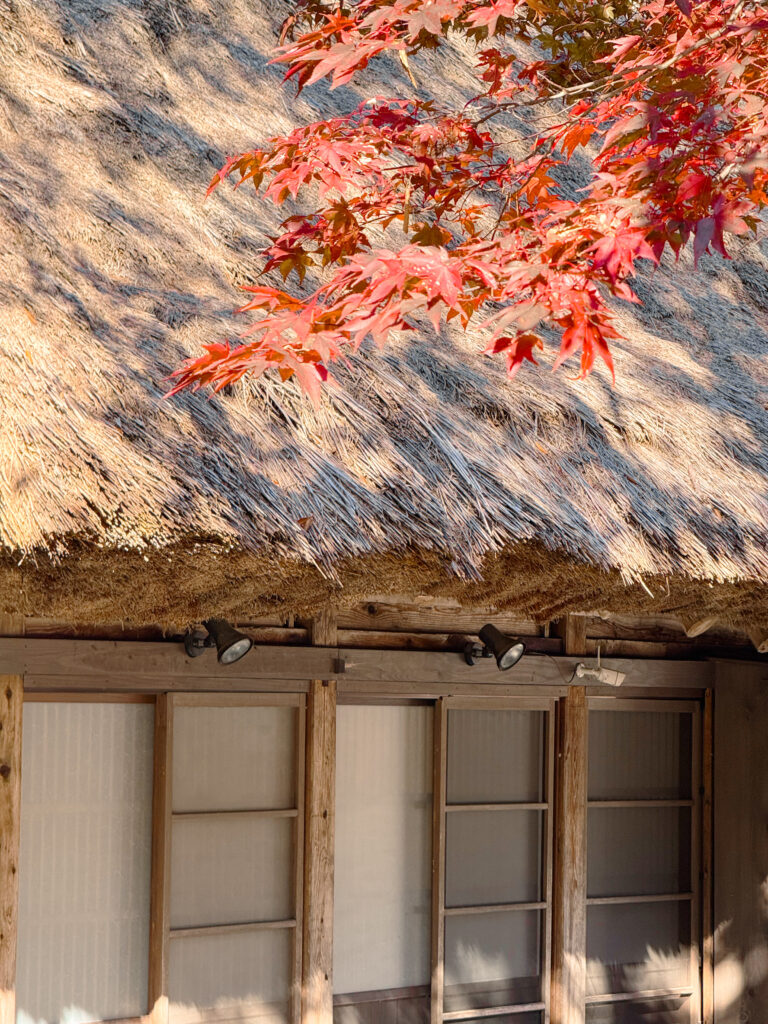
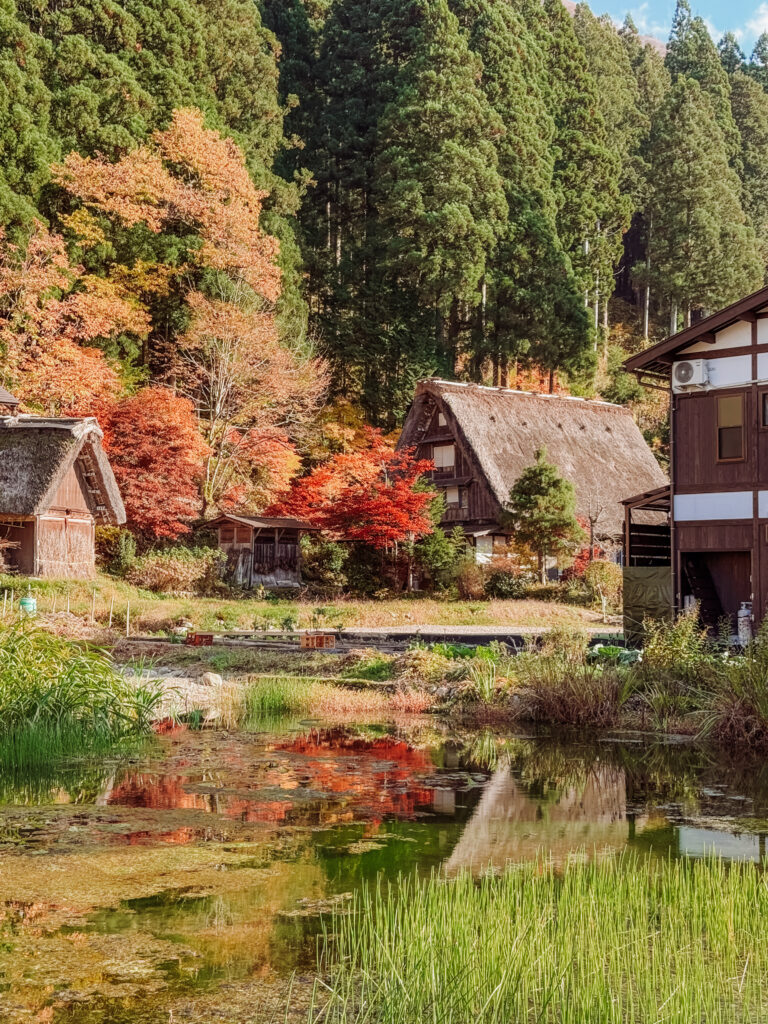
While we were there we saw a roof being refreshed and it looks like a lot of work! The roof can last 40-60 years and local villagers would take approximately 4 days to make them.
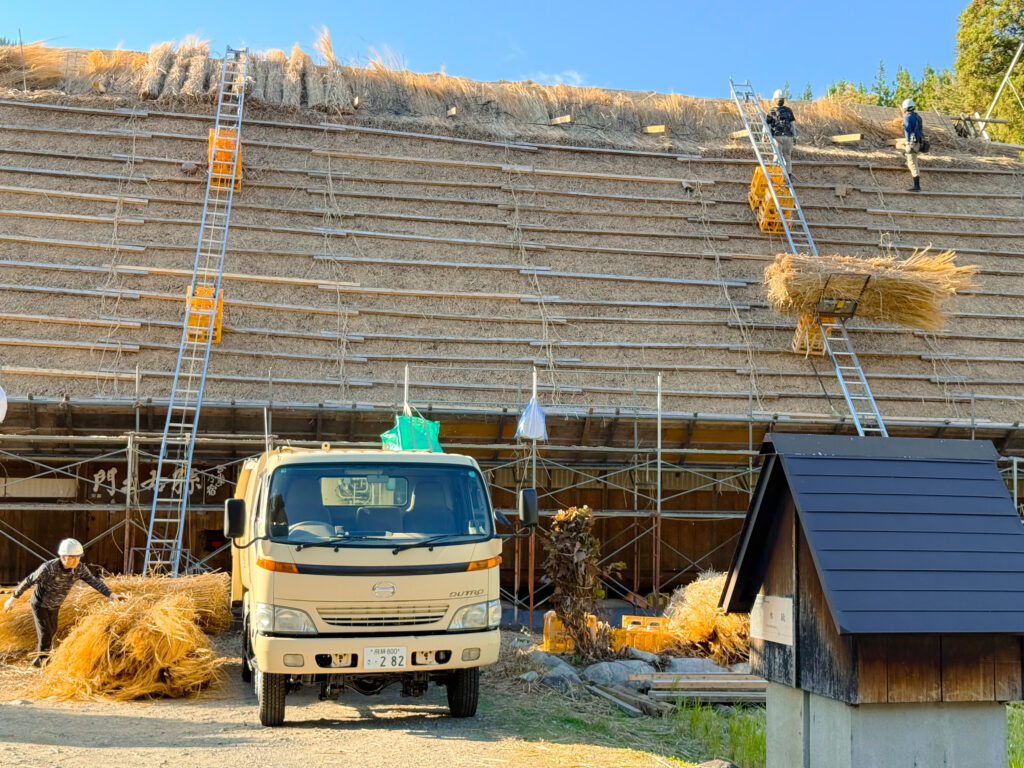
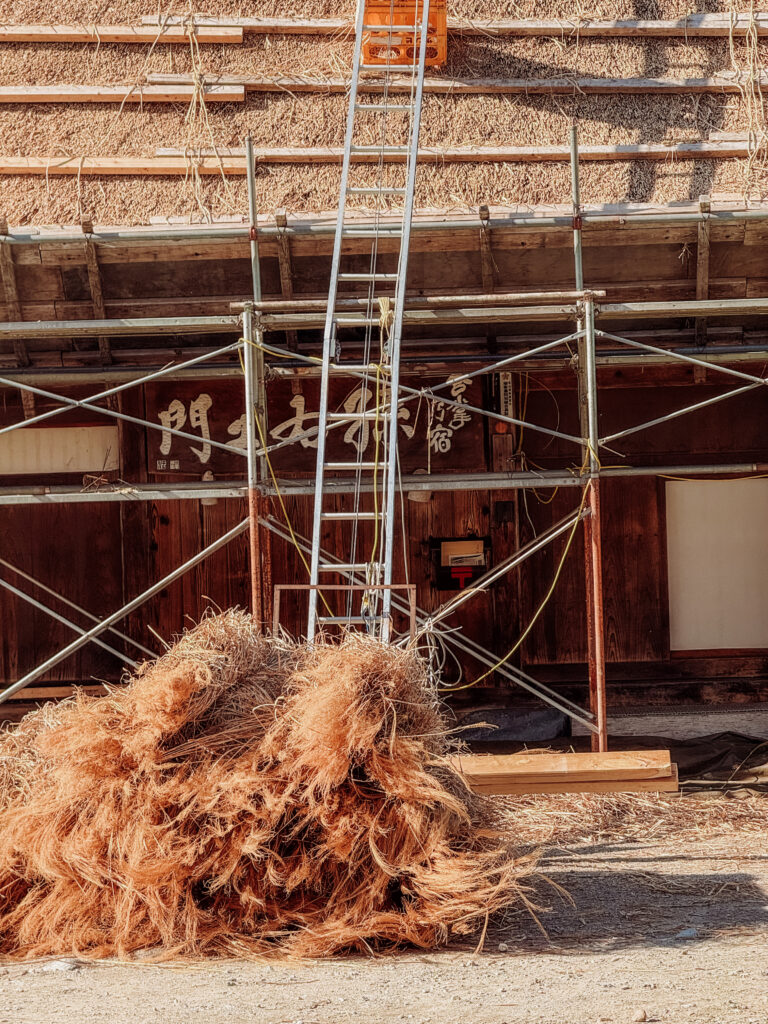

There are a few differences between these houses and the usual Japanese homes, they have large attics that were designed to house and breed silkworms! This was once one of the largest industries in Japan. They also had a large living and working space as they often served as workshops. This will be obvious when you are able to look inside the homes. There is often a large work space so during the heavy winter people could continue to work. You can take a tour of these old farmhouses which is absolutely worth doing, below I have listed the houses you can pay to enter.
Shirakawa-Go Things To Do:
If you are a nature lover or enjoy soaking up a slower pace of life when the chance presents itself then you will fall in love with Shirakawa-go! Wandering the streets with your camera and breathing in the fresh mountain air really is an appealing change from the busy cities and one we adored. This is what you can do while you are there if you need a little more incentive to head out there. Honestly, it is so worth it!
1. Check out all the gassho-houses
Of course this is number one on the list, these unique houses are probably why you came. You can wander the streets observing from the exterior or you can pay to enter some of the houses (pay in cash at the house), these are the best. (Please note that this is still a functioning village and some of the houses are private and not available to be entered, there will usually be a sign with pricing so look for that and don’t wander into someones home.)
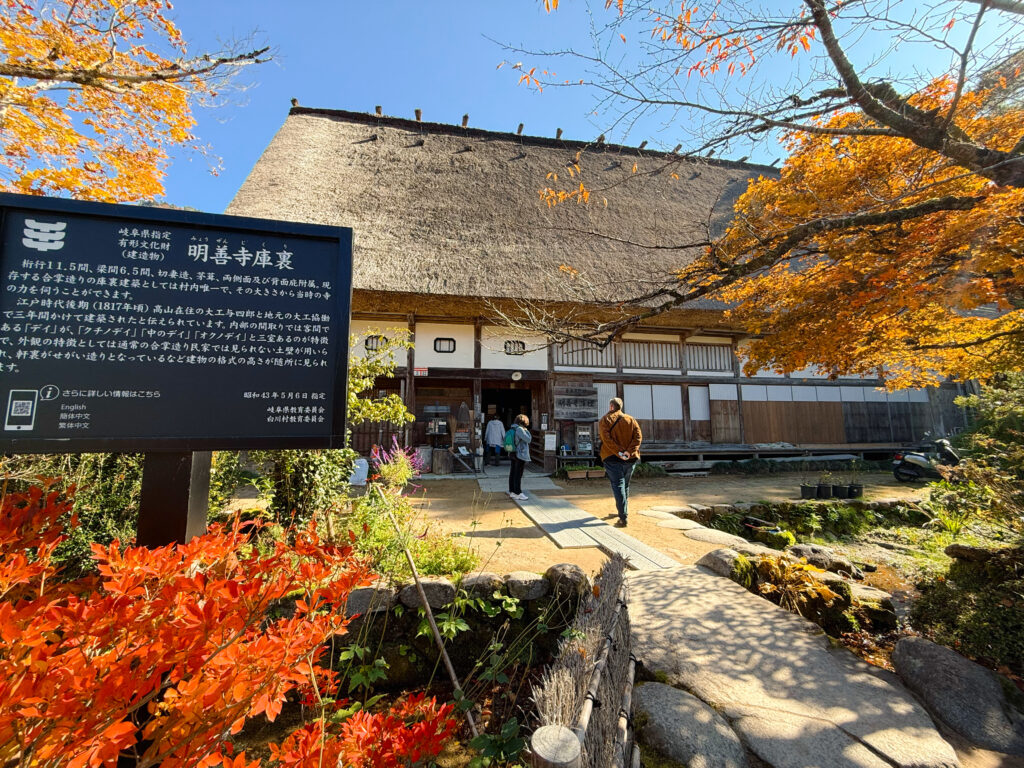
Wada House
The Wada House is one of the most significant and largest farmhouses in the village. The Wada family were traders of silk and gunpowder and resided here during the Edo Period (1603-1868). They were also the head of the village. While the farmhouse is a private residence visitors can tour the second and third floors daily between 9am-5pm with an entry fee of ¥300 for adults and ¥150 for children.
Kanda House
You can look in the entire Kanda House, which took approximately 10 years to build. Wander through and see how the buildings were made. It really is incredible. There is even a space under the floor where gunpowder was made. Open daily between 9am-5pm entry fee JPY300 for adults and JPY150 for children.
Nagase House
This the tallest Gassho-zukuri house with five floors. On the first floor you will find art work, furniture and a 500year old Buddhist altar. Up on the third and fourth floors there are examples of tools used in daily life by the Nagase’s family. It is a beautiful house and open 9am to 5pm, entry fee is JPY300
Tip – Unless you’re very interested in history and traditional architecture, visiting one of the farmhouses was enough for us, as each charges to enter and all are relatively similar. Another option is to make sure to add a visit to Hida Folk Village to your Takayama itinerary. There you pay once to enter the village but entry into each house is free. This way you will get the best of both worlds!
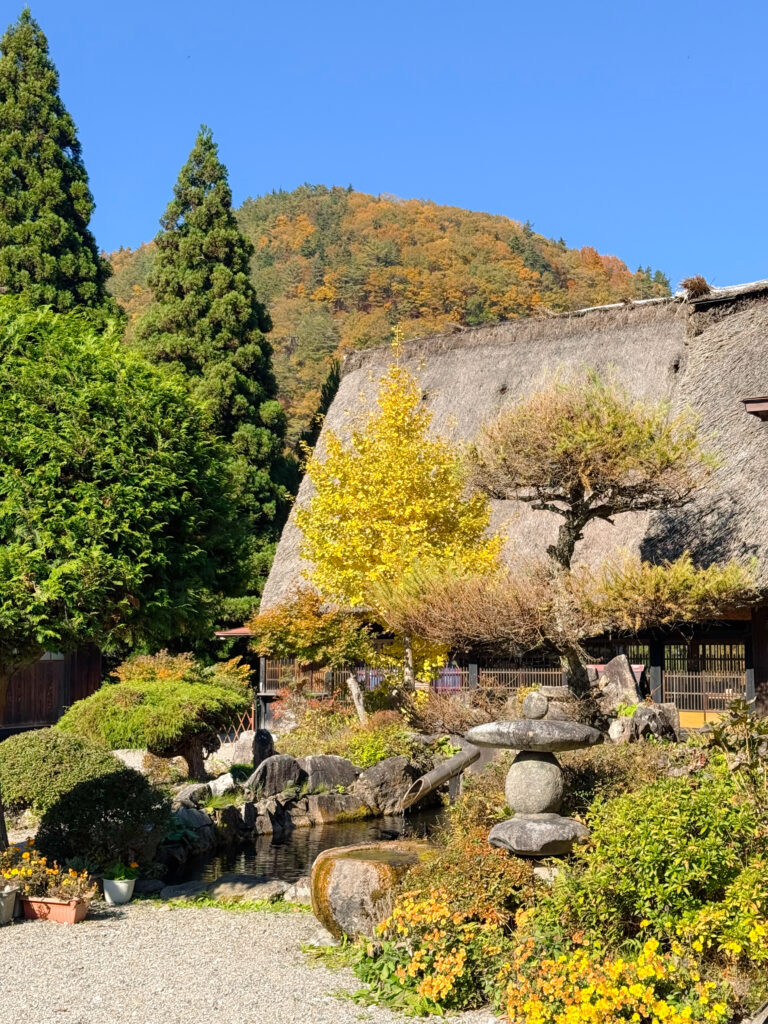
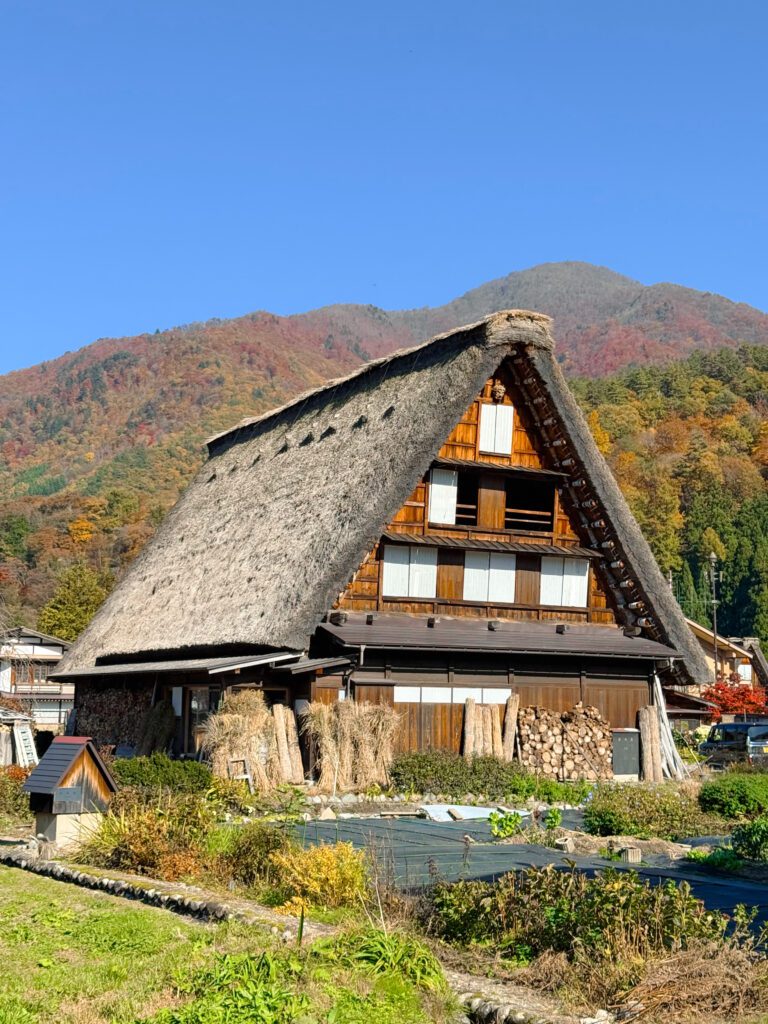
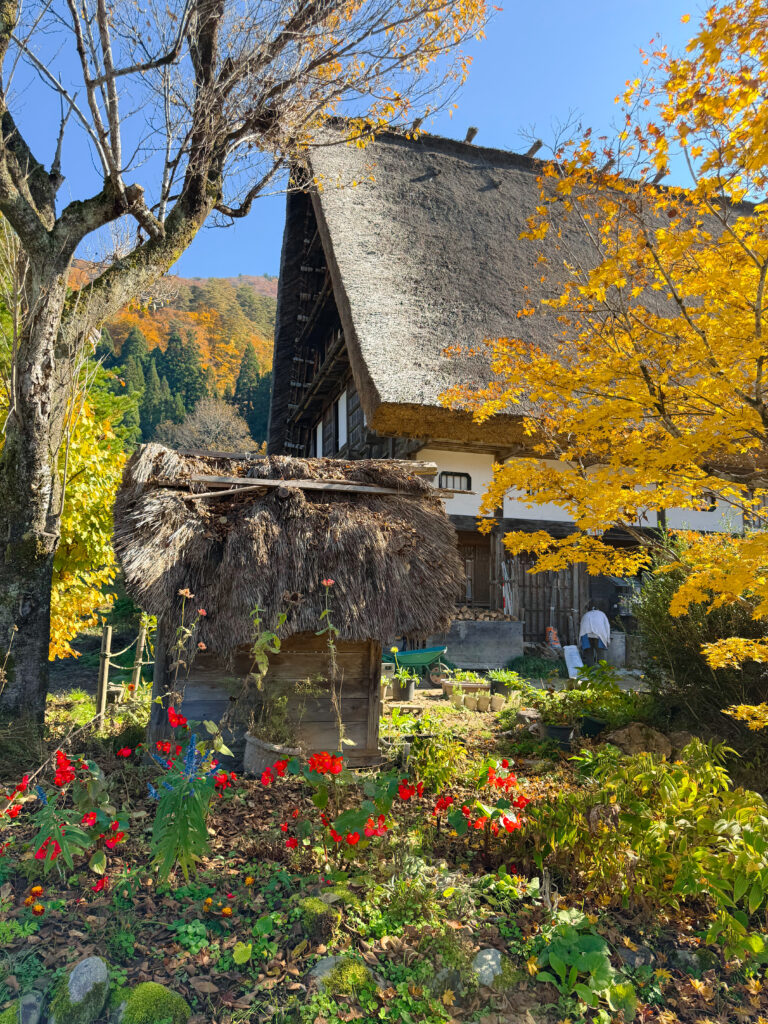
2. Ogimachi Castle Observation Point
This is one of my favourite places in Shirakawa-Go, it is free and a lovely walk up and down the hill to the view point. Come here to take photos overlooking the iconic farmhouses. From here you can capture the perspective of all the thatched rooves below with the majestic mountains in the background. We were there in Autumn and it was just stunning, all the colours of the trees dotted in and around the houses stood out from this viewpoint.
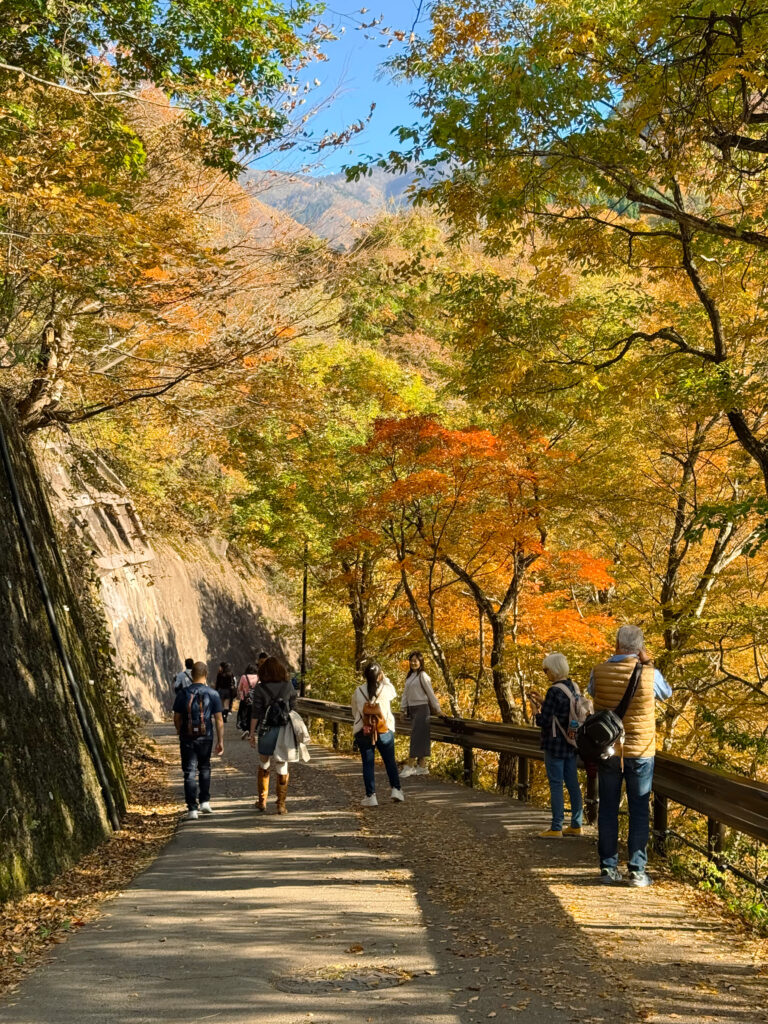
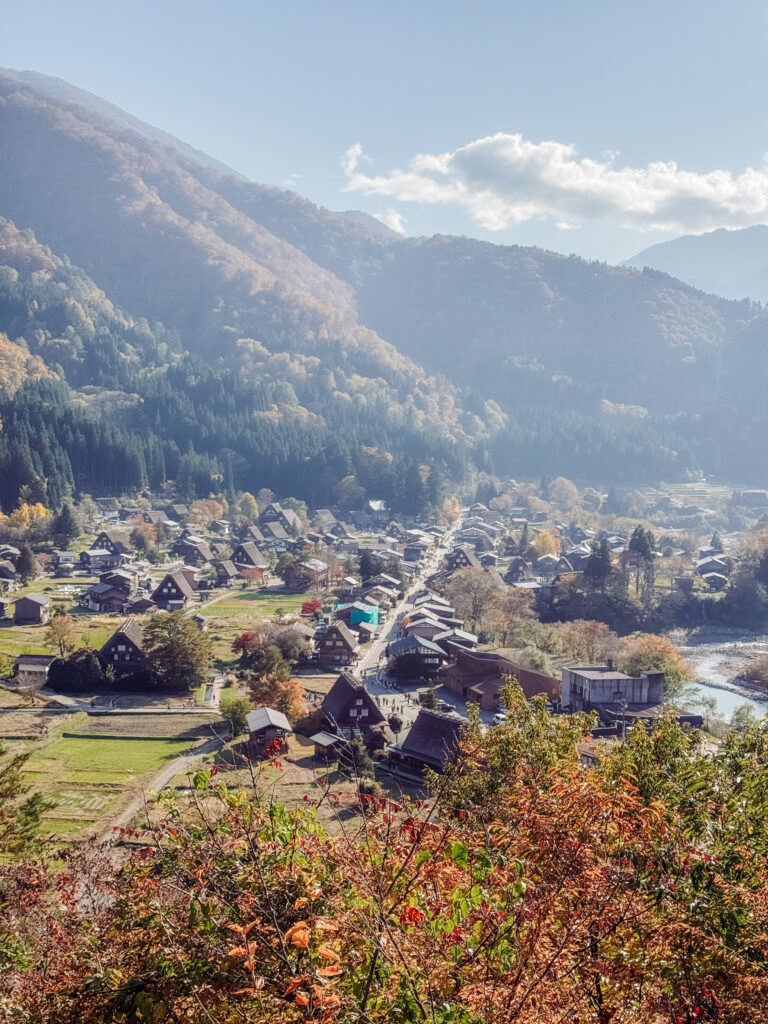
While the walk up and down only takes about 15 minutes there is a shuttle bus you can catch for JPY200 per person, just pay in cash on the bus.
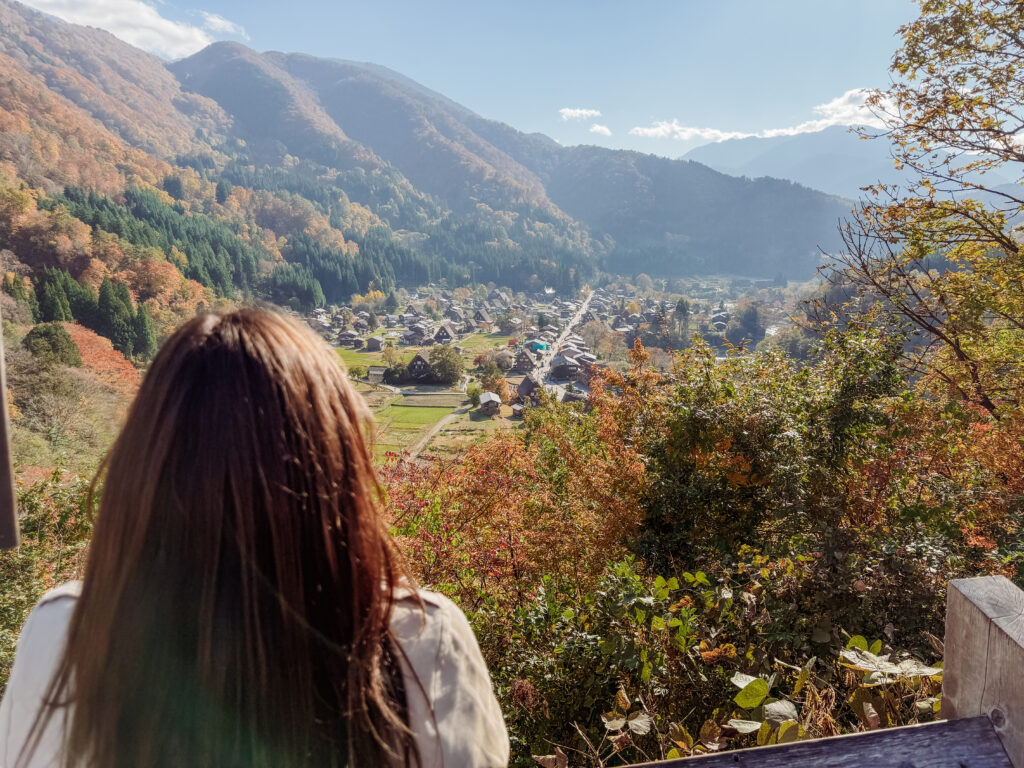
3. Check out the Museums
There are a few museums in Shirakawa-go, entry is cash payment. While all are interesting to visit, these are the best ones:
Myozenji Museum (Adults 300 yen / Kids 100 yen)
This is the biggest shrine in the village. When you enter you will see the main hall, kitchen and clock tower are all built in Gassho style. There are wall paintings in the main hall, drawn by Hamada Taisuke, a famous Japanese painter.
Museum of Silk Culture, The Tajima House (Adult 300 yen Kids under 12 free)
This is the only museum in the village with the theme of sericulture (silk production). There is an educational area where you can see silk production which is rarely found anymore.
Binen-Yumeromu Museum (Adult 300 yen / kids 100 yen)
Inside you will find artwork by local artist, an 800 year old sacred tree to rest under and head up to the second floor for a great view from the windows.
Shirakawago No Yu (Onsen) (Adult 700 yen / Child 4-12 yr old 300 yen)
There is an onsen in Shirakawa-go, take some time out to relax in the natural hot springs. There is an indoor bath and an open-air bath where you can enjoy views of the Hakusan mountain range, the Gassho village, and the Shogawa River flowing below. If you are staying at any Shirakawa-go inns can use the hot spring for 600 yen instead of 700 yen. Ask for the discount coupon(required) from your inn.
The Open-air Museum (Adult: 600 yen / Kid: 400 yen)
In this separate open air museum there is a total of 25 Gassho houses. Nine of these are designated as important cultural properties. There is also watermill, shrine and temple halls, you will find it over the suspension bridge from the main area.
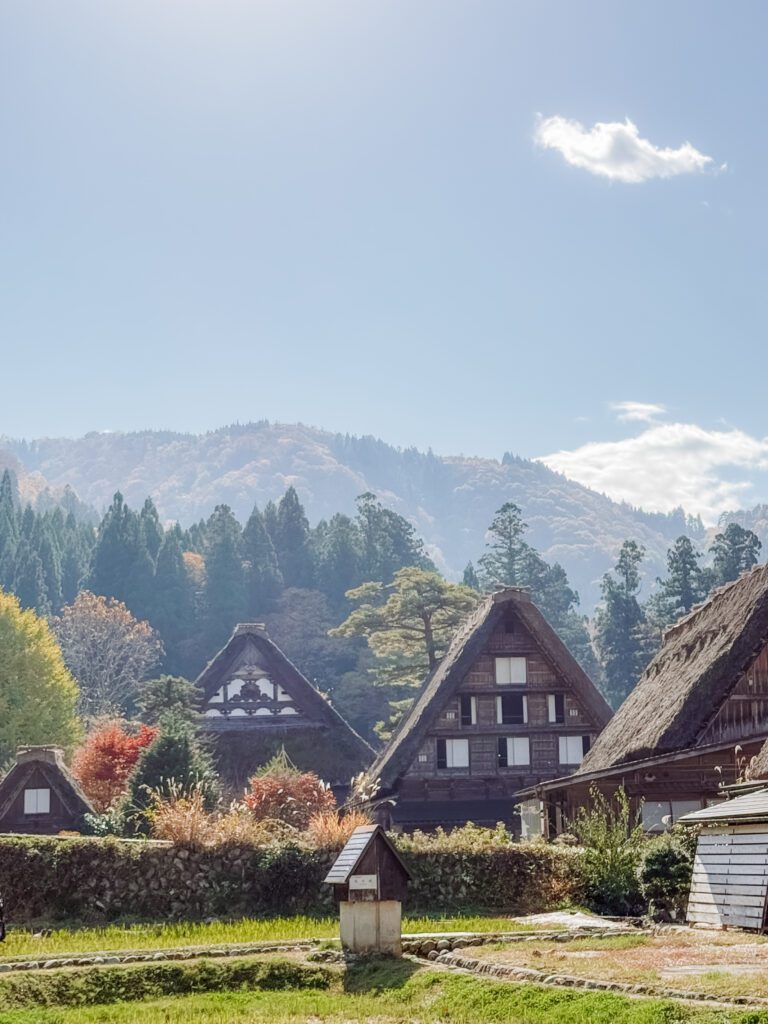
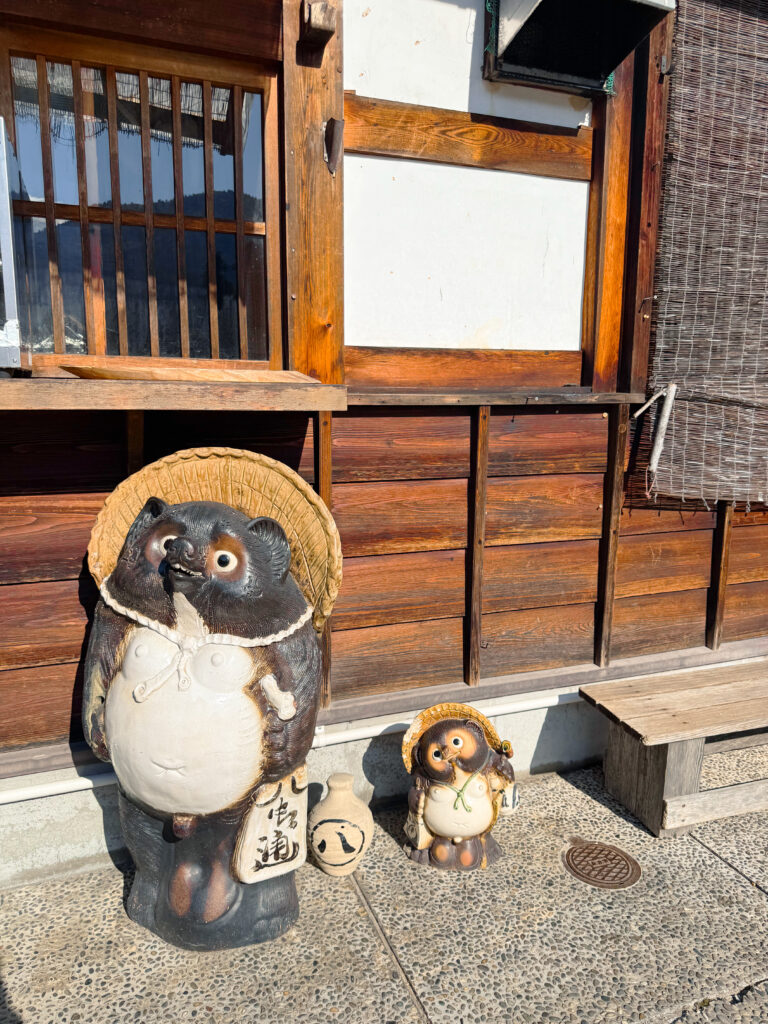
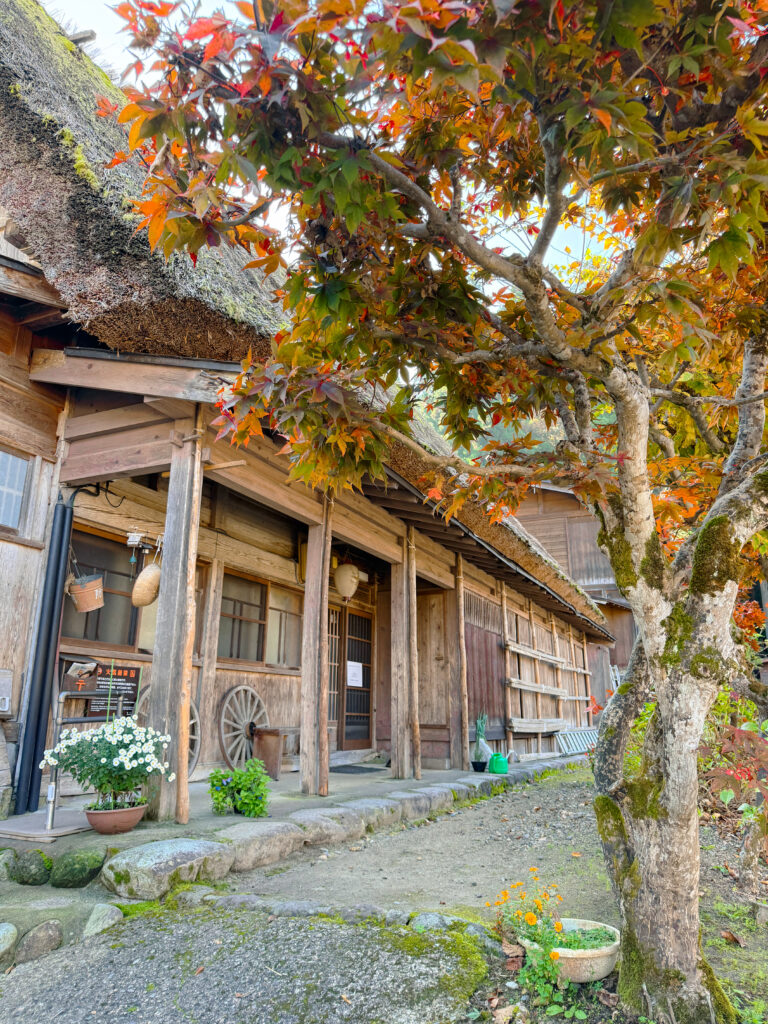
4. Grab a coffee in a gassho house
Some of the gassho houses have been turned into coffee shops and are the perfect place to enjoy a drink while soaking up the atmosphere! Check out the most popular one at Kyoshu, this has beautiful views over the rice fields. Another one to check out is Ochiudo which serves coffee tea and light meals, it is incredibly charming inside and gets really busy. Finally there is Coffee Shop Hina whcih is a little outside of the village but is quieter. Stop in for a coffee, cake and to enjoy the quaint atmosphere.
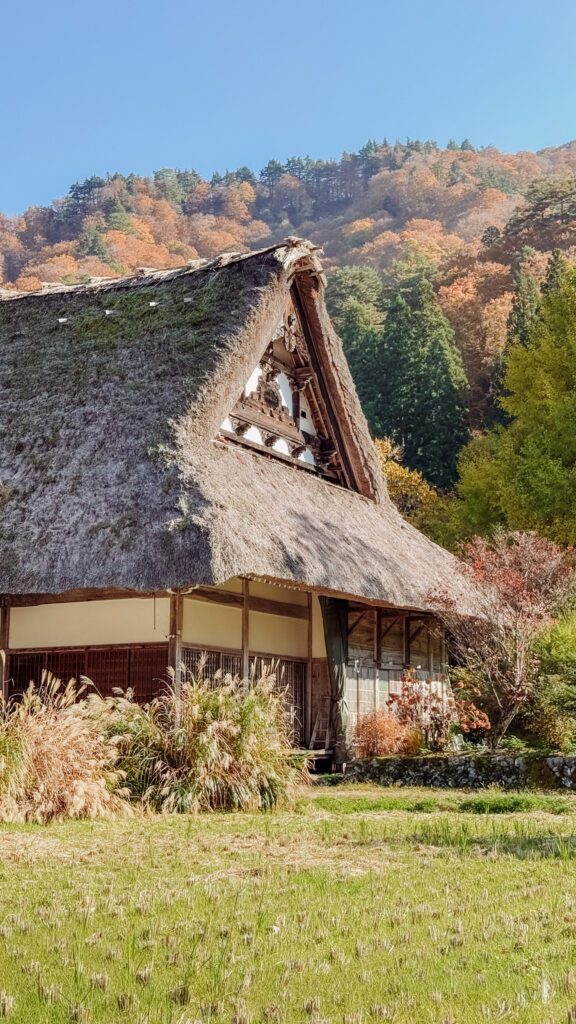
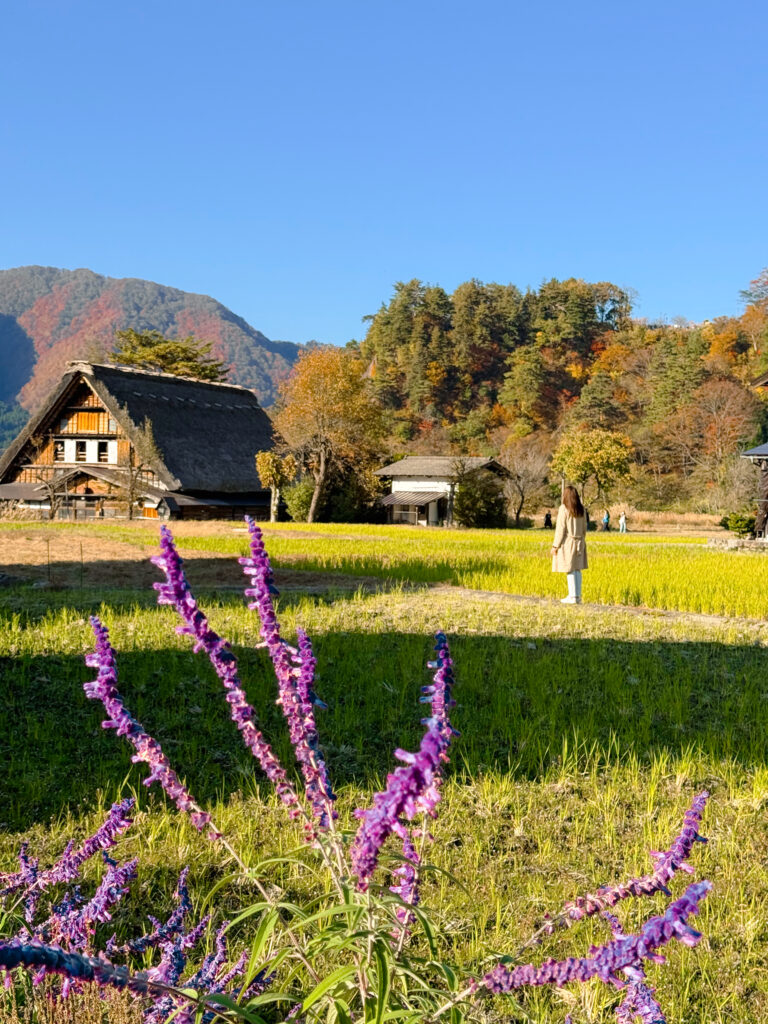
5. Shirakawa-go Kaido
This is the main street of Shirakawa-go, you will easily find it running straight through the village. Here are all the little restaurants, shops and street stalls to try different foods. This is the busiest part of Shirakawa-go and we kept it until later on in the day so it was a little quieter after the busy lunch time.
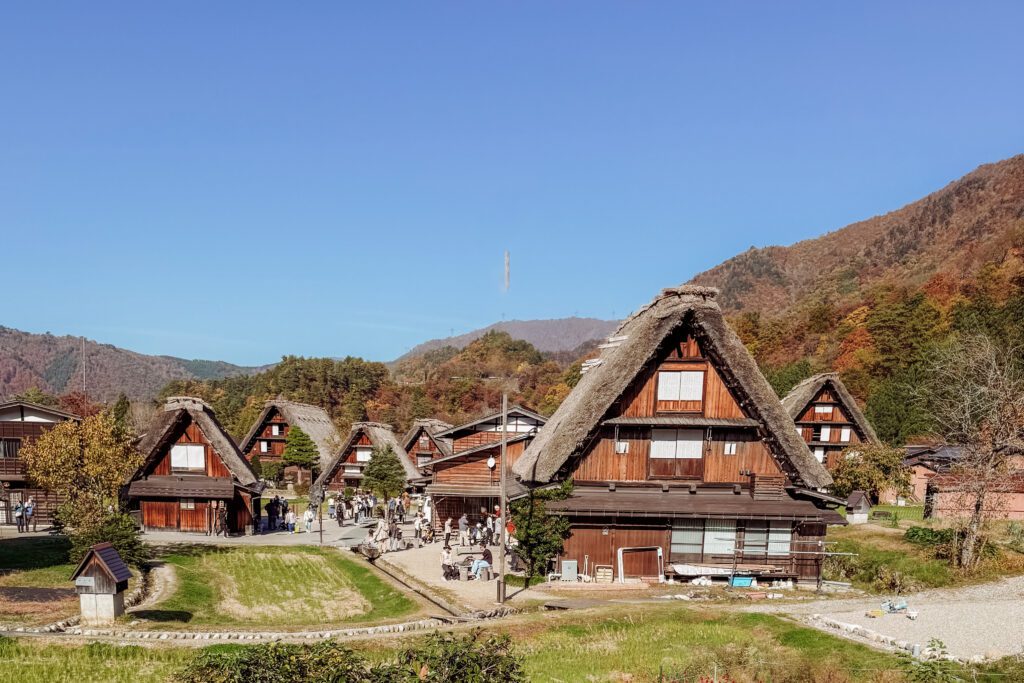
6. Go souvenir shopping
While you are in in Shirakawa-go Kaido stop into the souvenier shops and check out the local specialities. You will find unique items such as foods and snacks but also the sarubobo dolls that are found only in this region. The dolls are easily identifiable by their red bodies and black hankercheif head scarf, they dont have faces and are a good luck charm. They are thought to protect from bad things, having a good childbirth and to create a happy home and partnership. We didn’t see these anywhere else so if you would like one then make sure to get it here! They are in all forms from tiny to larger dolls.
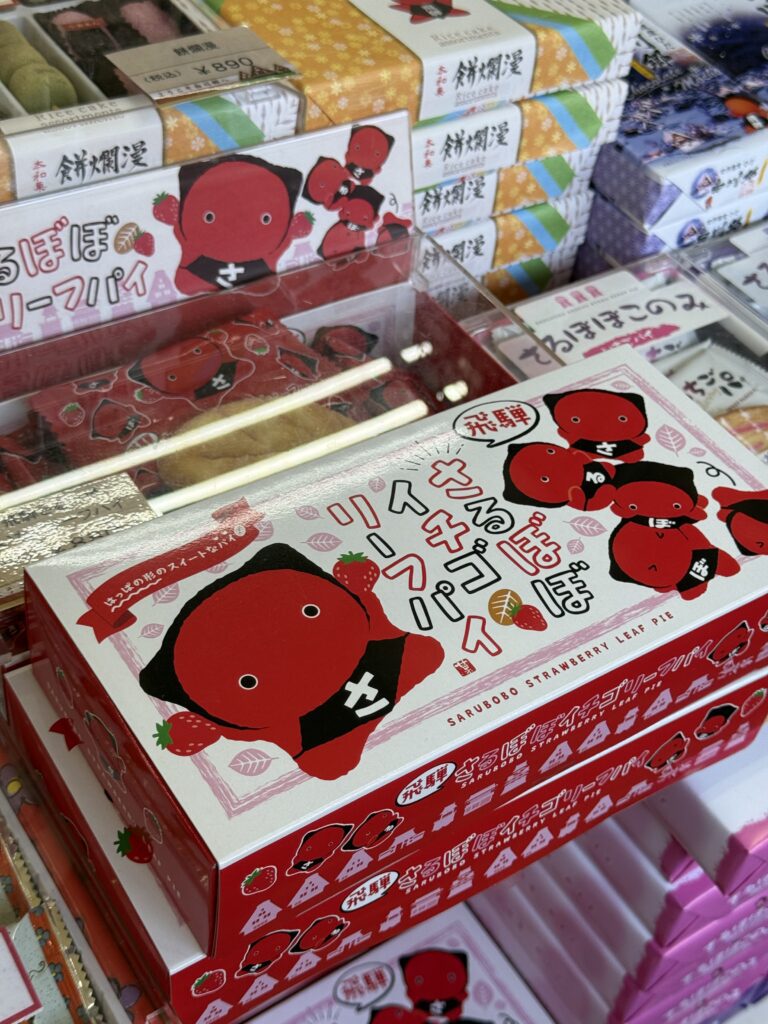
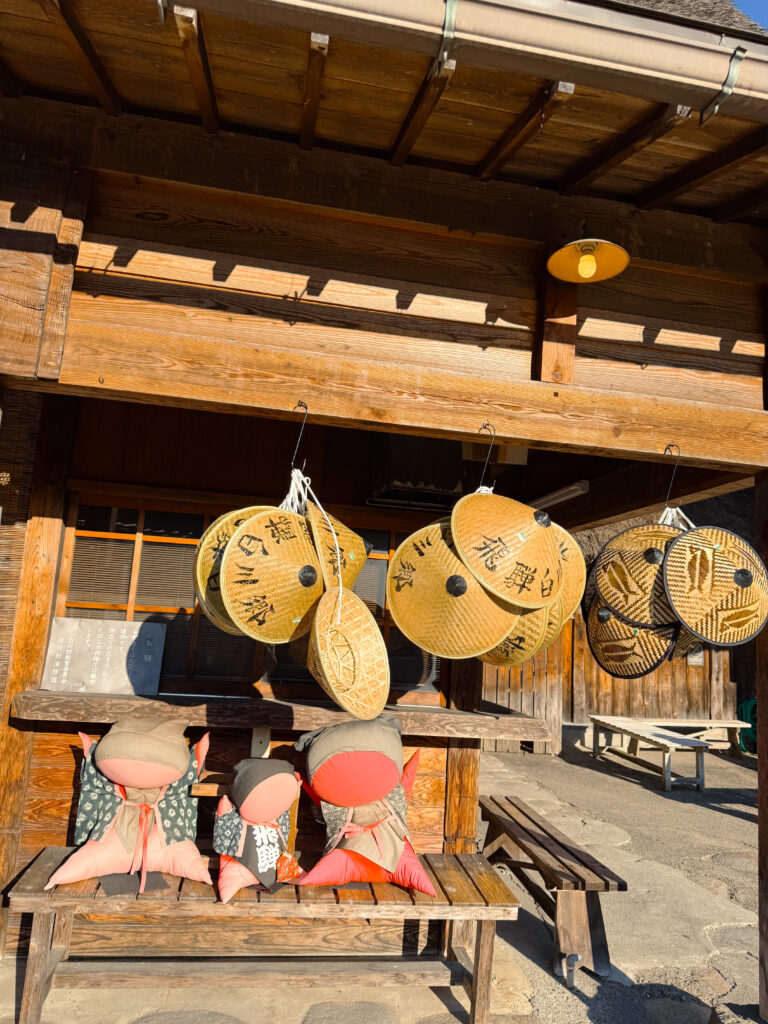
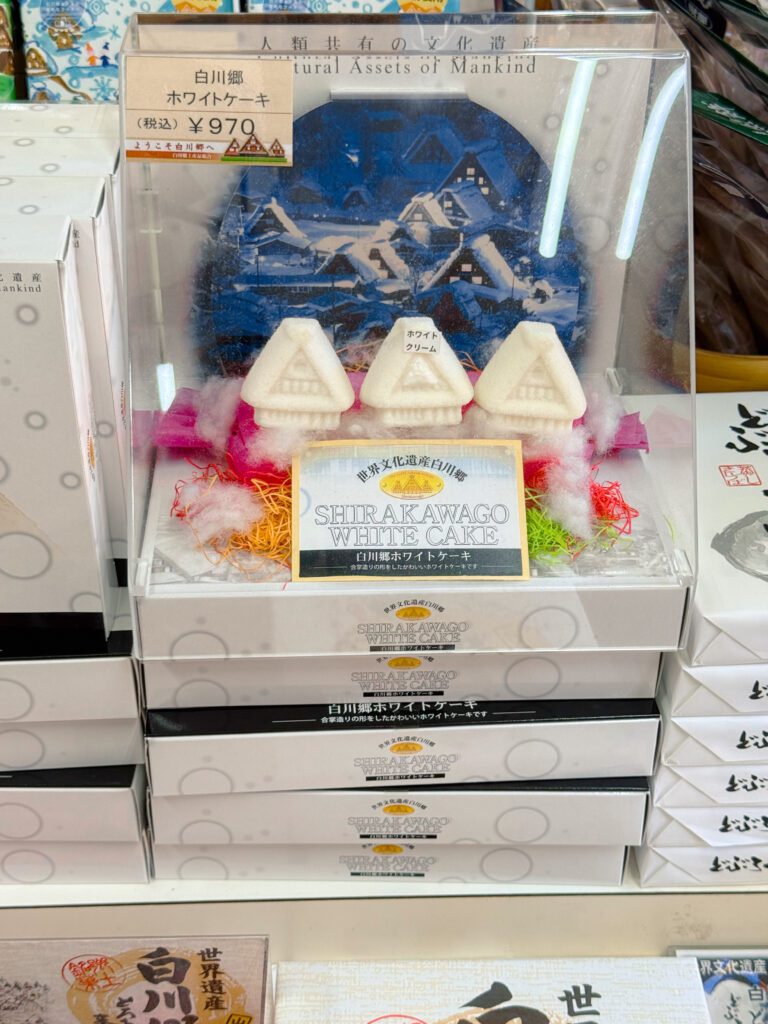
7. Shirakawa Hachiman Shrine
This is where the local Doburoku festival is held each year in October. The shrine is dedicated to a local deity and is a lovely short walk from the main street. You can take some photos here, rest and enjoy the peace.
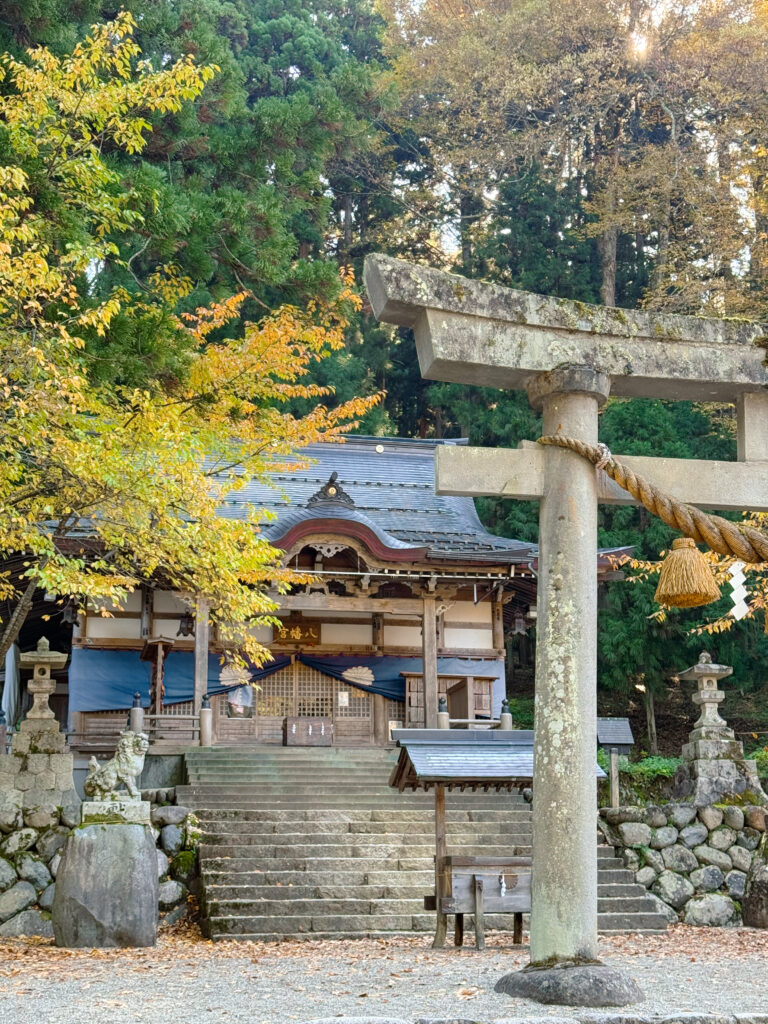
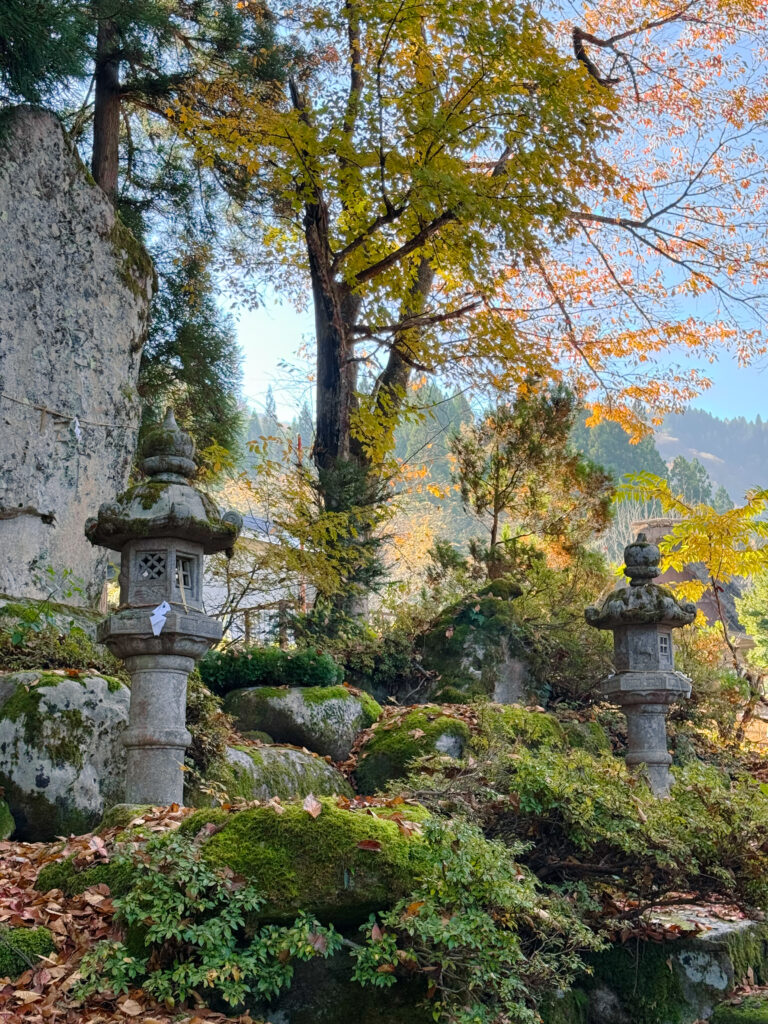
8. Eat the pudding!
Honestly I should have put this higher up on my list as it was maybe my favourite find of the town…this pudding house is excellent! Shirakawago Purin no Ie (Pudding House) is very small and ususally has a line up but don’t let that stop you. The lines move quickly and it is worth it! You will find different types of pudding as well as some seasonal flavours but we went for the traditional vanilla pudding after checking it was gluten free, This pudding may be the best I have ever had, not too sweet and slightly firm it tasted and felt like a creme brulee and was delicious. In 2022 they won Japans pudding championship with their unique water pudding.
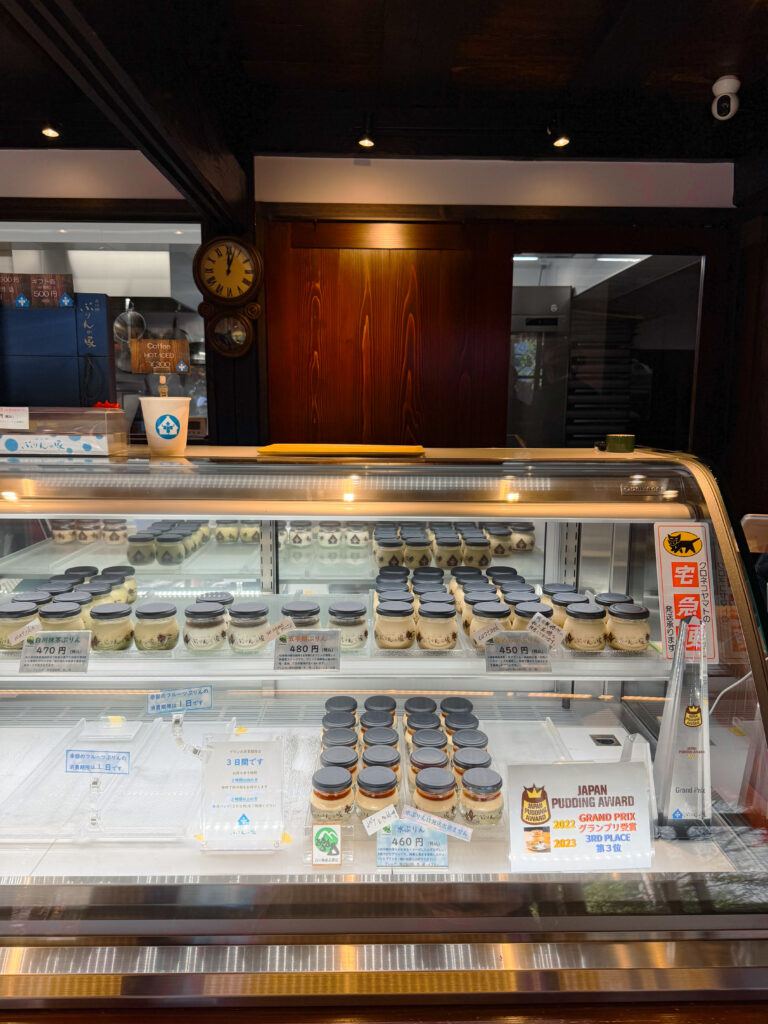
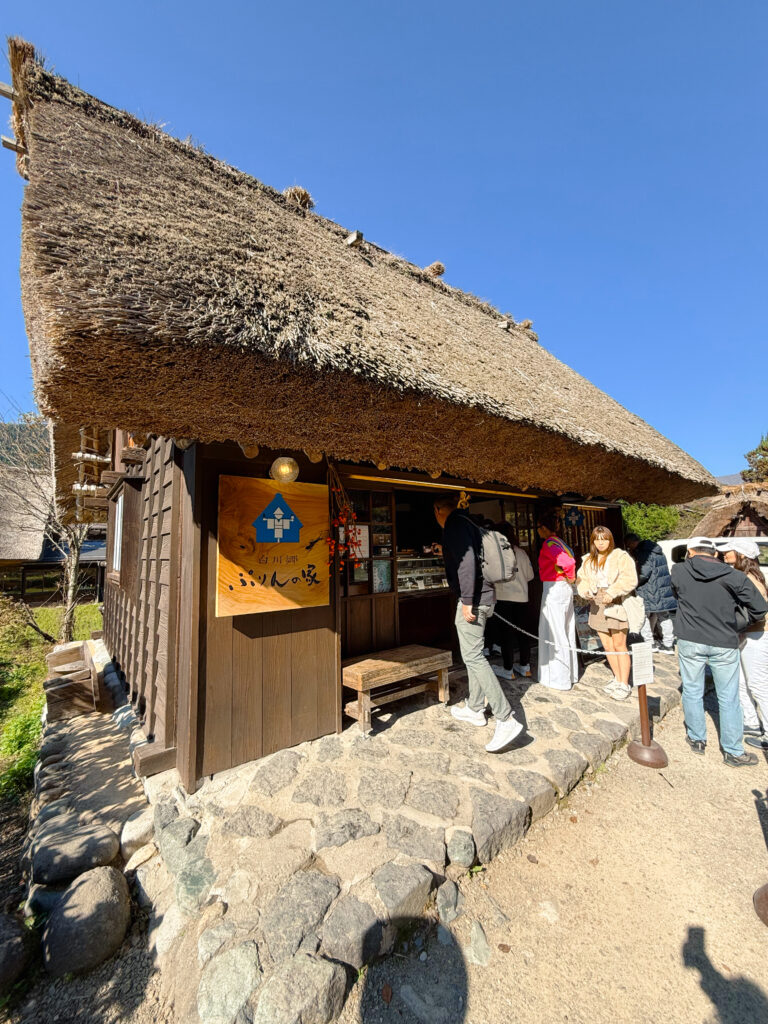
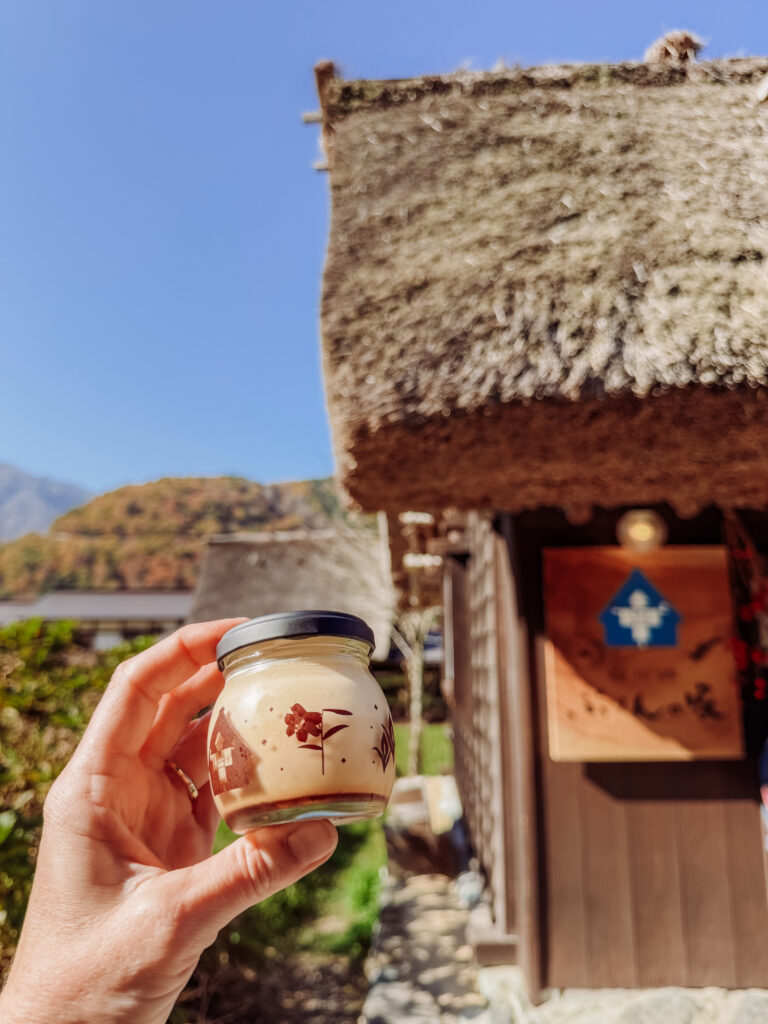
9. The three houses viewpoint
The whole village of Shiaraka-go is very picturesque but the three houses viewpoint is a must see. You could easily miss it if you don’t walk away from the main part of the village. Here you will find three pretty gassho houses with a rice field in front. Be a little careful here as we saw a girl who had twisted her ankle getting too close to the field and slipping, there is a path just stick to it.
The other photo spot I would make sure to see is the observation deck, the views over looking the village are beautiful.
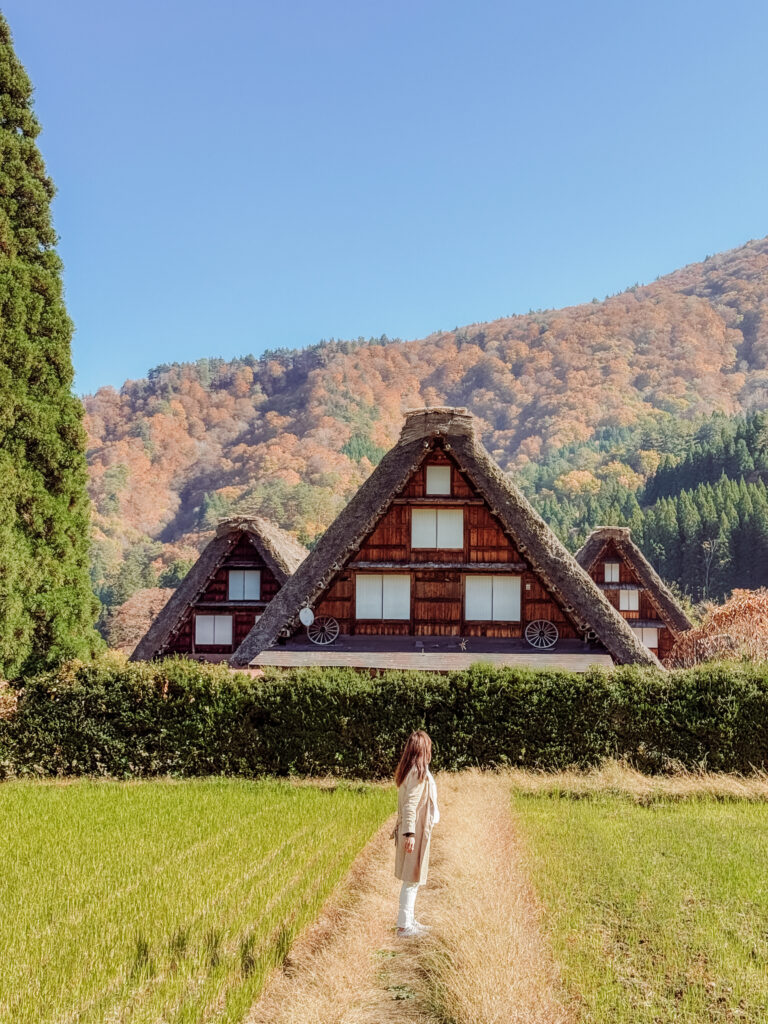
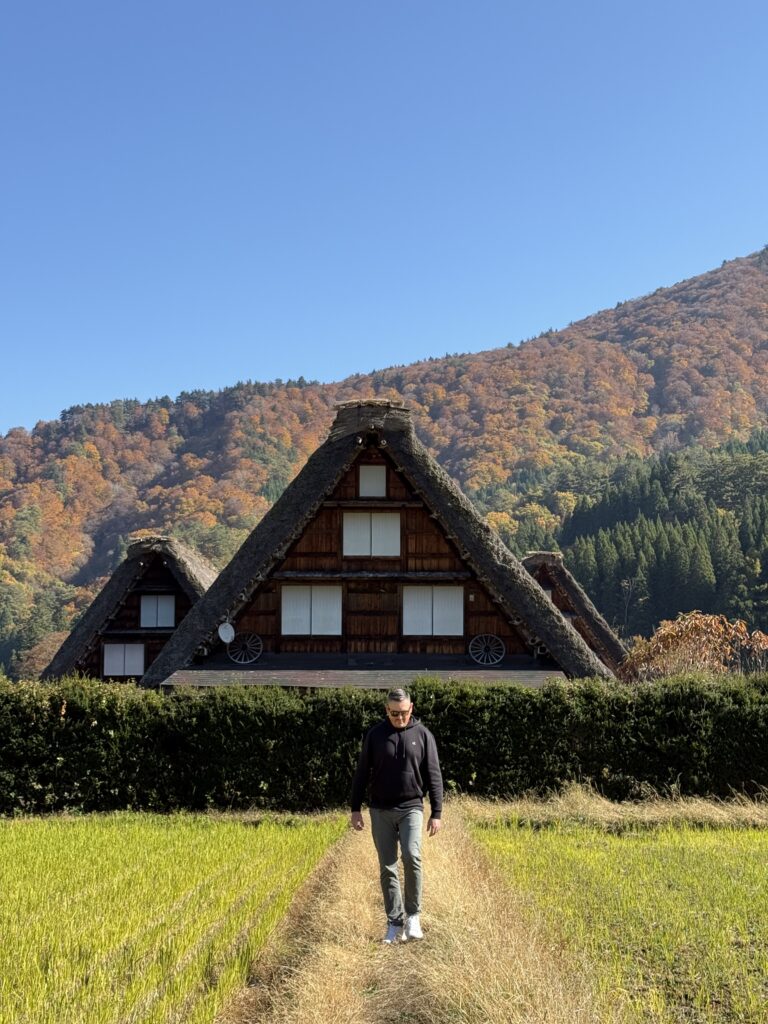
Hida beef is a regional specialty, and therefore you’ll find many vendors selling it (it’s also a staple on all the restaurant menus in town).
10. Eat in Shirakawa-go
There are lots of street foods to try such as the Hida beef skewers, steamed buns and croquettes but the gohei mochi is also local to the area. We also tried some delicious icecream with a black bamboo cone. The strawberry flavour was intense and the cone tasted just like a wafer according to Mike, although the striking colours were beautiful!
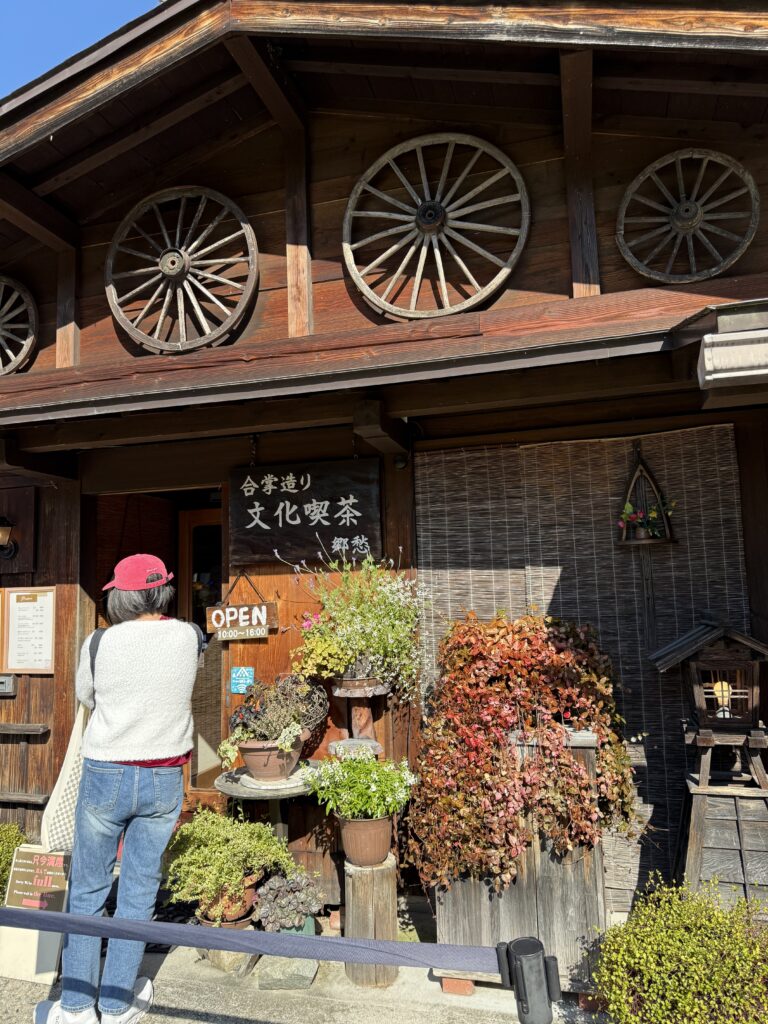
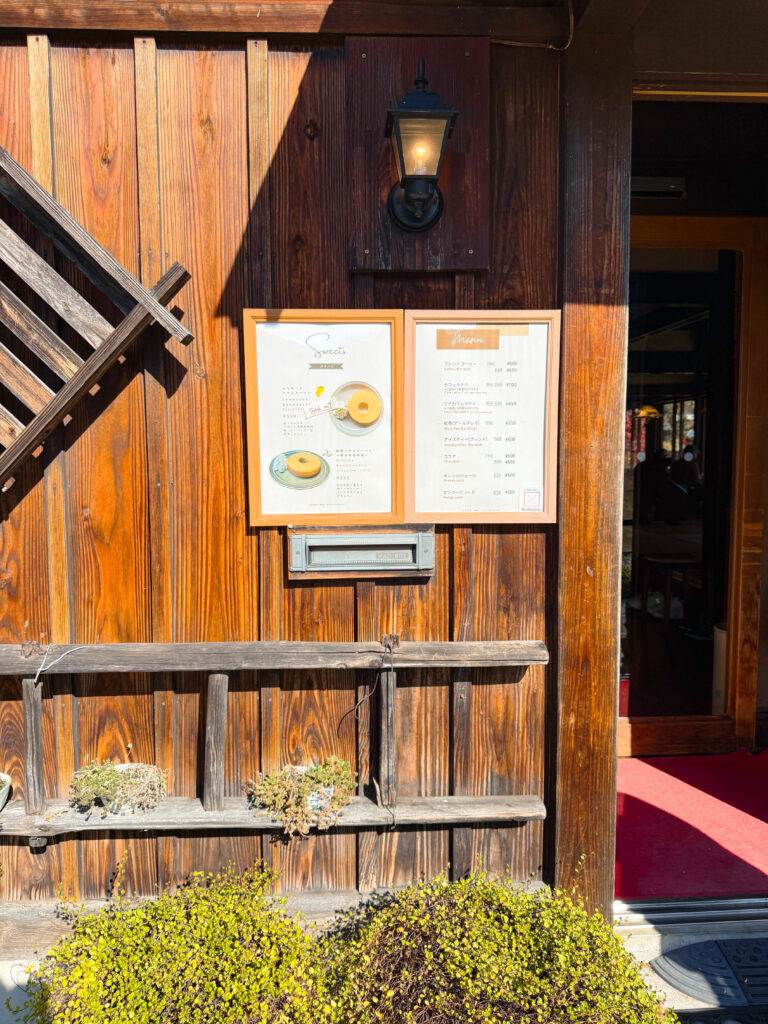
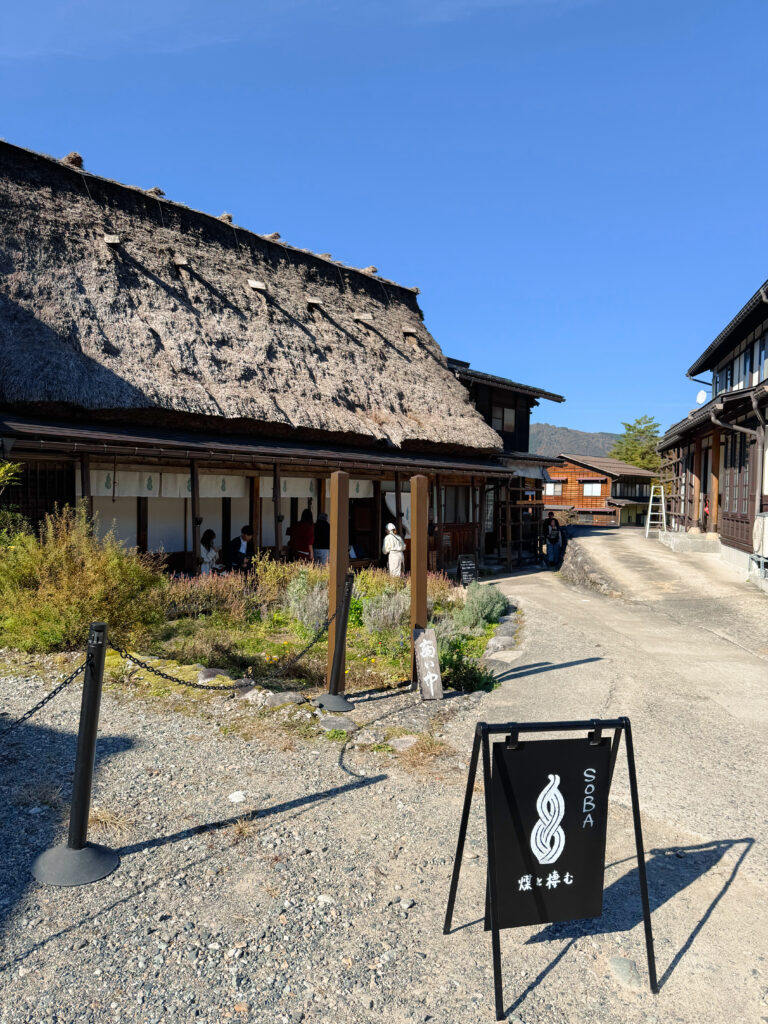
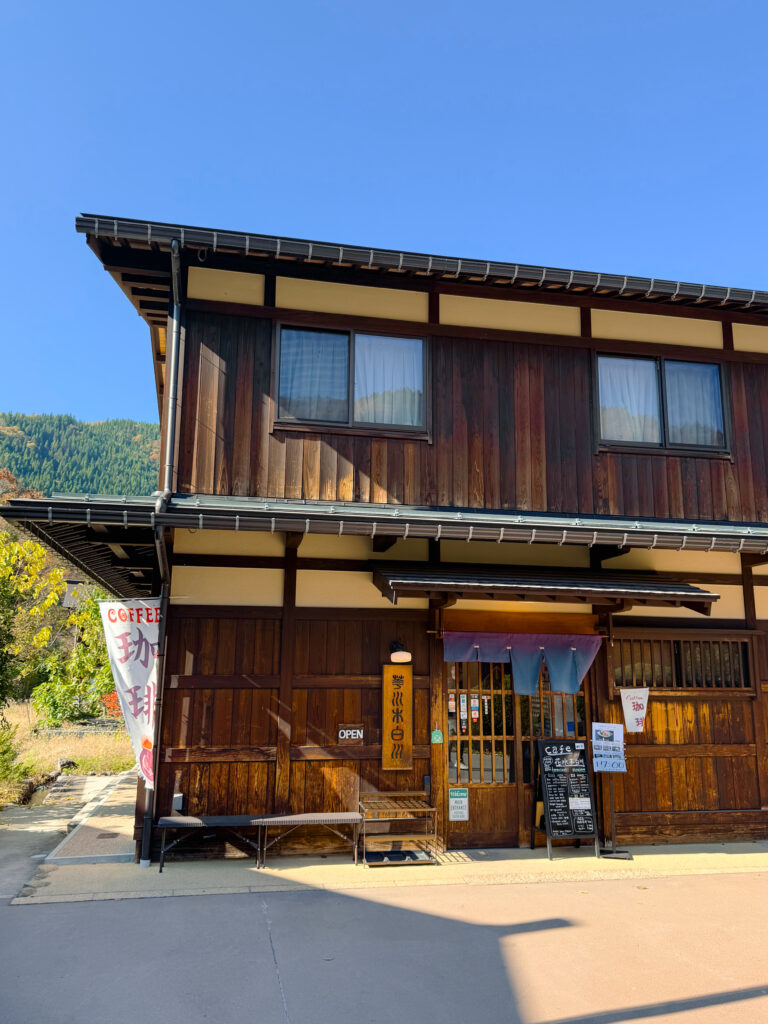
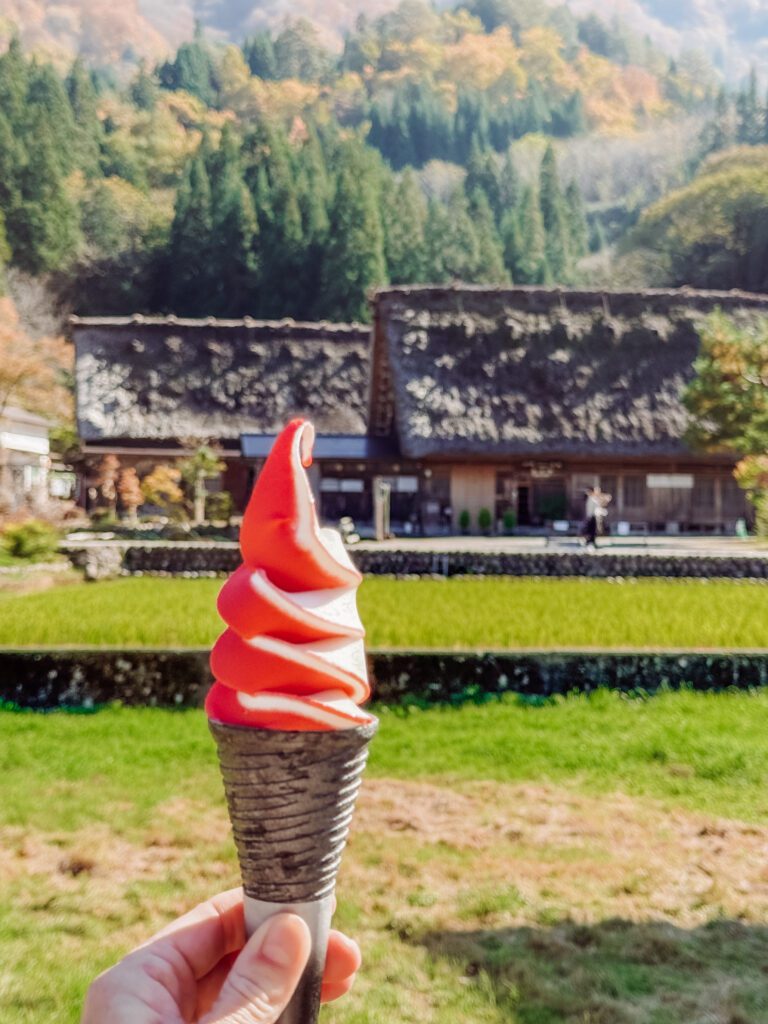
If you are looking for a restaurant there are many, highly recommended is Shirakawa-go Restaurant Irori, Hiiragi and Ochiudo.
Is this the only gassho house village?
There are three villages that make-up the area, you would need a car to visit Suganuma and Ainokura which is my plan for our next Japan trip!
Ogimachi
This is the most famous and most visited main village of Shirakawa-go. It is where the bus will take you from Takayama. While is the most crowded, it also has the most to see and do. Don’t worry though. We arrived with about 4 other full bus loads and everyone dispersed out and we were able to find our own space. It’s really just the main street that gets busy.
Suganuma
A very small village with just 9 traditional farmhouses, it is also quieter without the crowds or buses. It’s a nice place to get some quiet pictures.
Ainokura
This village is the furthered away and honestly the one I want to come back to visit most. It’s midsized with about 20 houses and still quiet, more of an actual working, non touristic place.
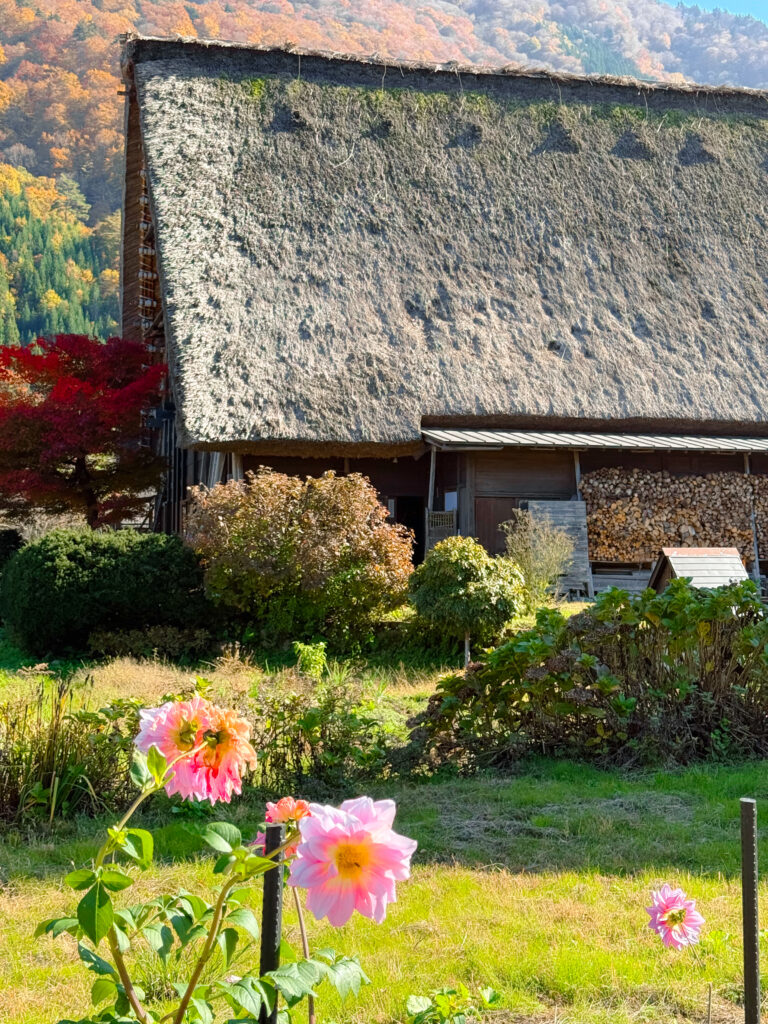
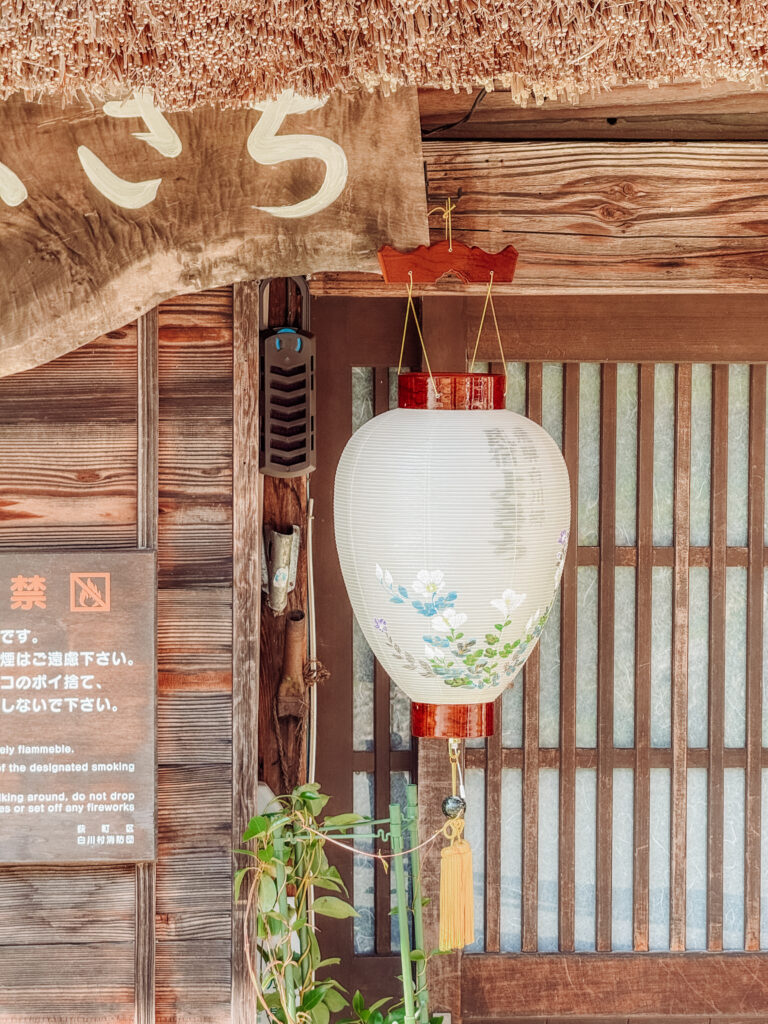
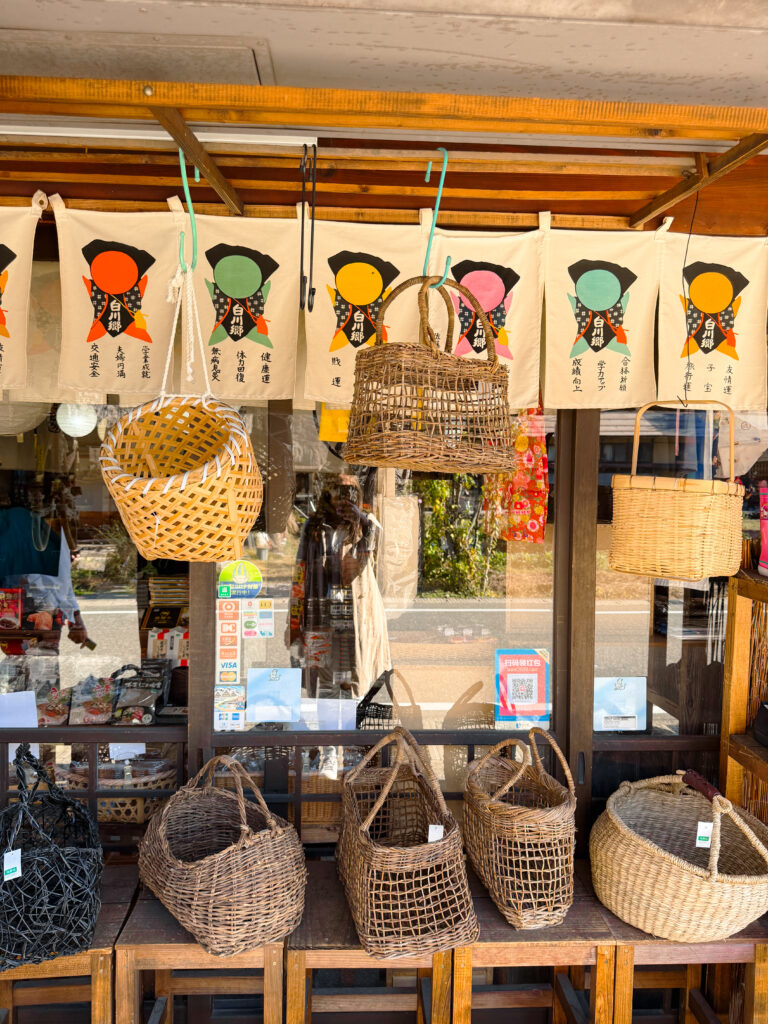
Are You Booking a Trip Soon? These are the sites we trust!
These are the sites we use to book, they are our affiliate links and by clicking through you will help us earn a few cents to keep our website up online. We really appreciate it!
1. Book Your Flights
We will always check and book through Booking and Trip.com they have great deals!
2. Book Your Accommodations
We always check Booking.com, Expedia, Klook and Trip.com. They all have great deals and sometimes are better in different continents, for example we almost used Trip and Klook exclusively in Asia and Booking.com always in Europe!
3. Buy your E-sim!
E-sims have changed the game in communication while travelling. They are cheap and easy to use, we never go without them. Our current favourite is Yesim!
4. Book Your Tours & Experiences
I usually use and recommend Get Your Guide, Klook and Viator to book tours and activities. THey also have shuttle options to and from airports which is great. I love the real reviews you can check and we have never had a problem with them!
5. Book Your Rental Car
Self-driving is my favourite way to explore most destinations, we use Rental Cars.
6. Don’t Forget Travel Insurance
Travel insurance is a must, Mike travelled for years without it but now we see that was a little crazy! We feel so much better knowing we have a backstop for cancelled flights, delayed luggage, sickness on the road and wouldn’t be without it! Safety Wing is great, especially for frequent travellers.
7. Airport Lounge Access is a must!
Use Priority Pass to access to 1,400+ VIP lounges and airport experiences worldwide.
Where Next?
Nara Deer: The Ultimate Guide to Japan’s Famous Fawn-Filled Park
What to do in Mt Fuji in one day
Kawagoe Day Trip: A Complete Guide to Exploring Japan’s Little Edo
What to Do in Hida Takayama: Top Activities for First-Time Visitors
Things to do in Hakone Day Trip
Indonesia, Sumatra: Gunung Leuser National Park – 9 Day Jungle Trek!
Bukit Lawang, Medan – the town on the edge of the jungle!
Indonesia, Sumatra: Palau Weh Island – An undiscovered gem!
24 hours in Penang Georgetown, Malaysia
How to spend two days in Kuala Lumpur, Malaysia
Visiting Batu Caves, Kuala Lumpur, Malaysia
What to do in Langkawi, Malaysia for 3 days.

